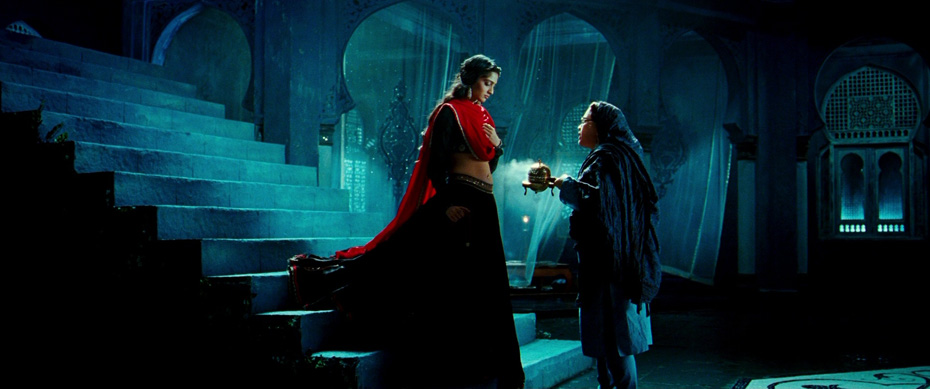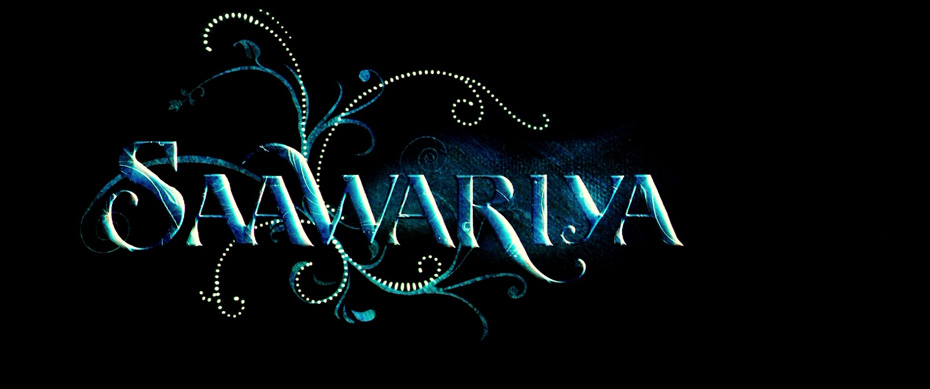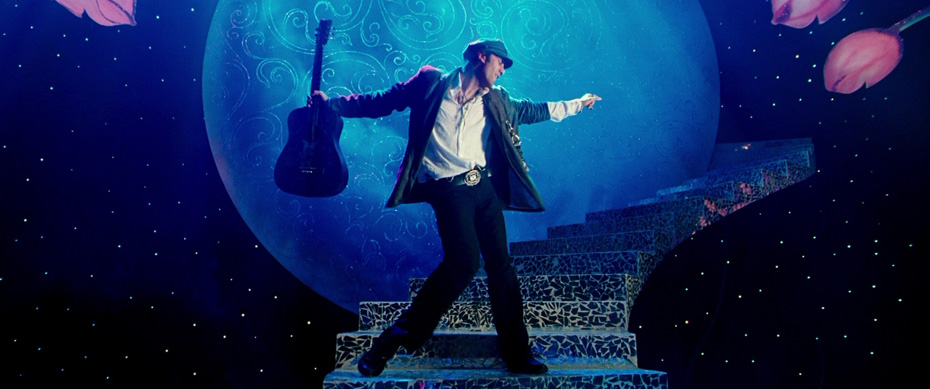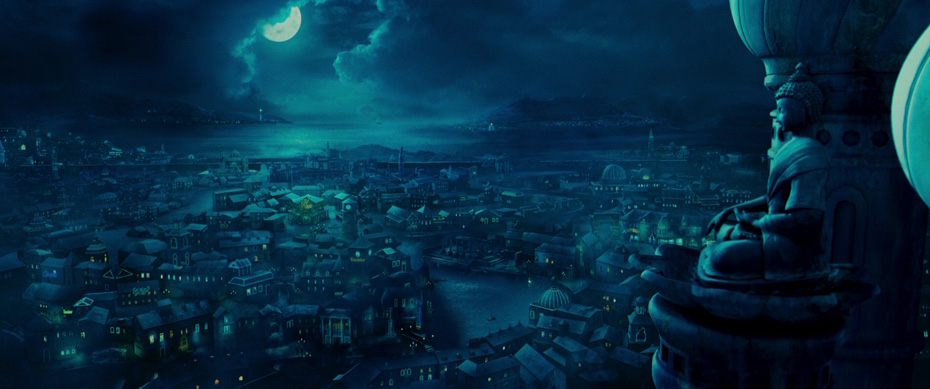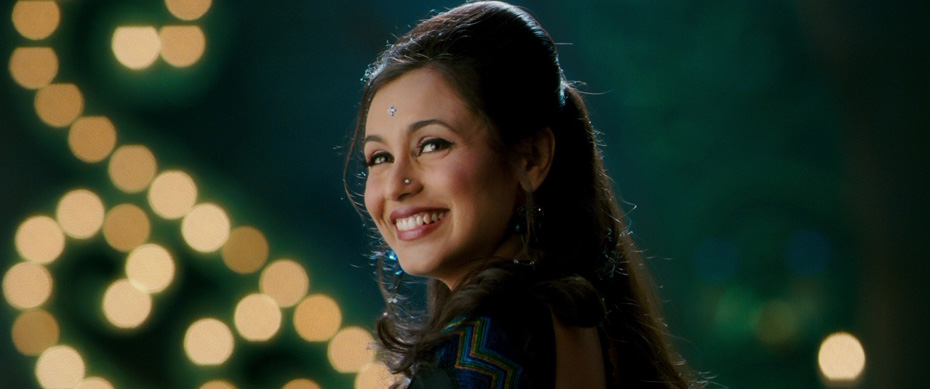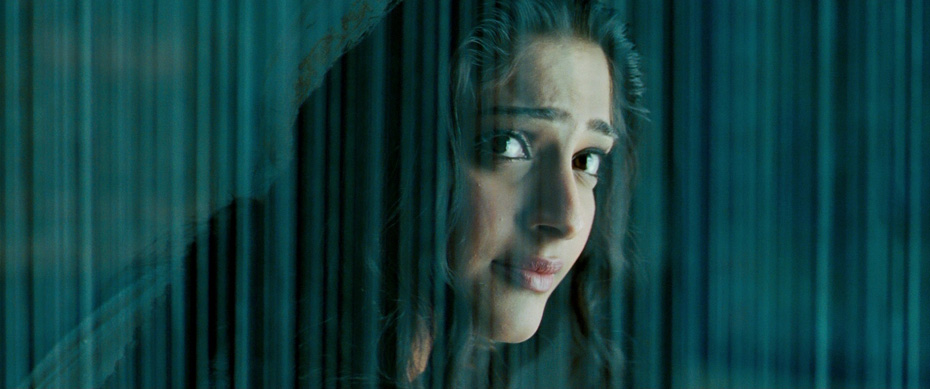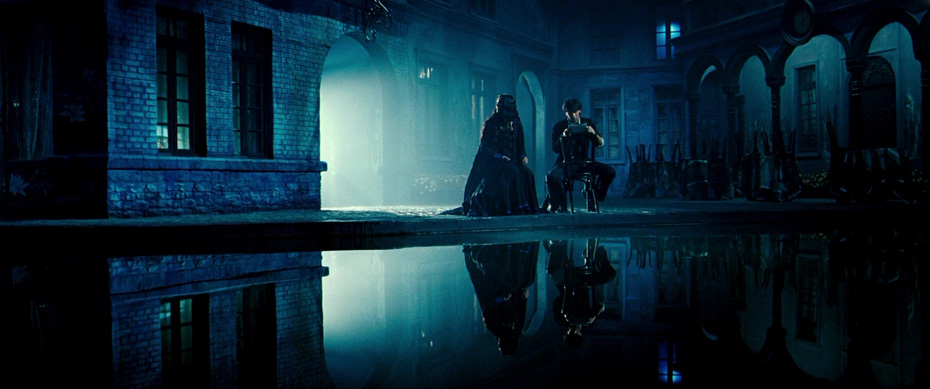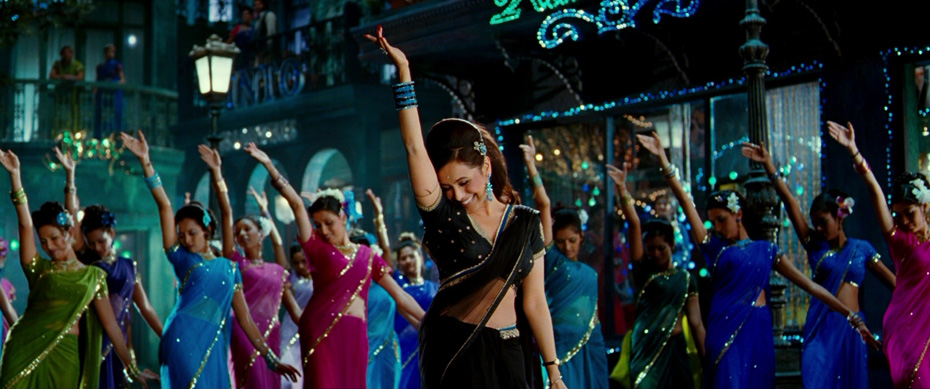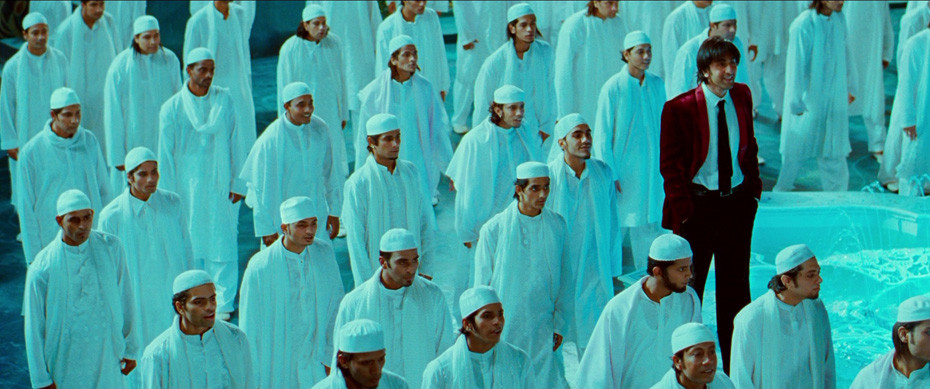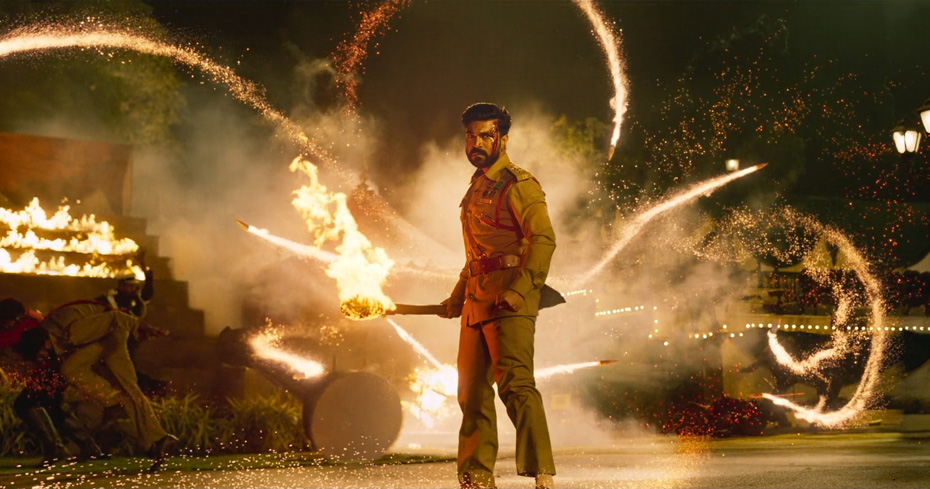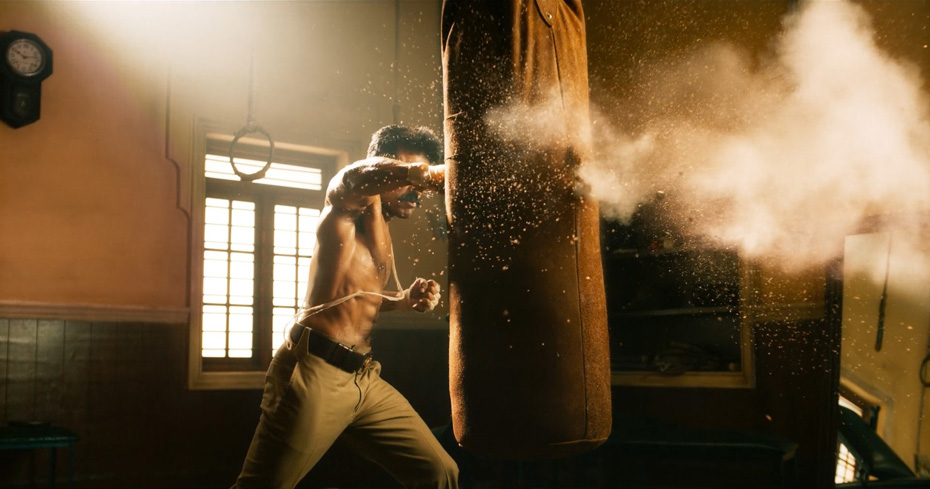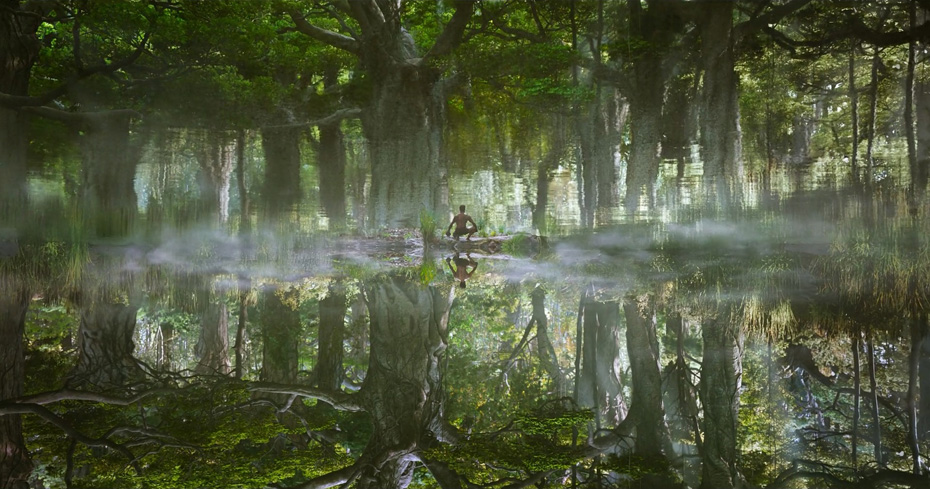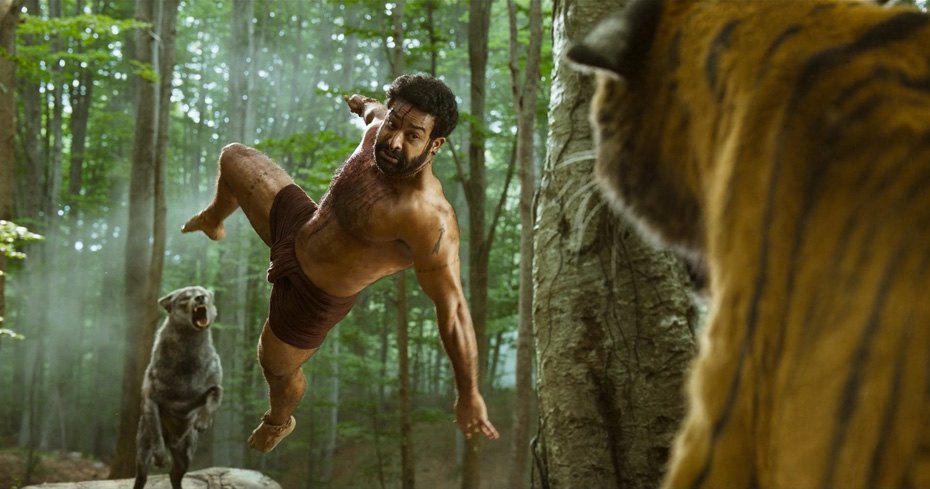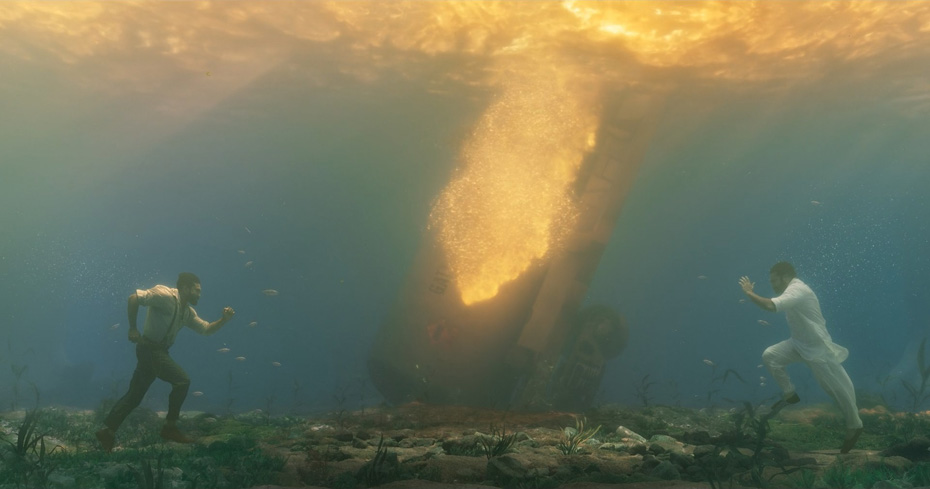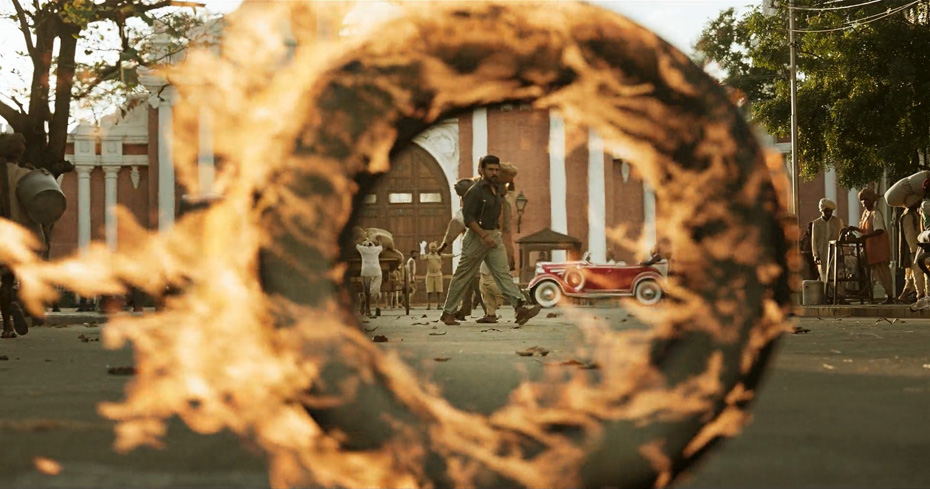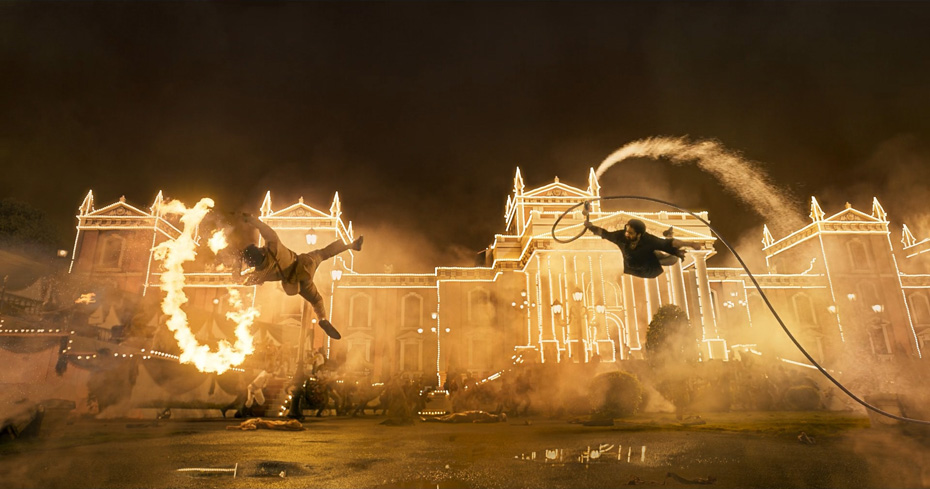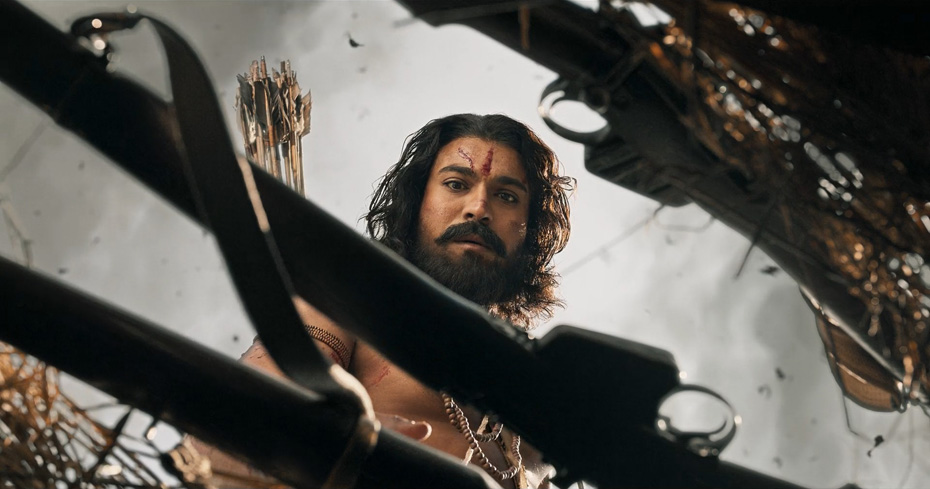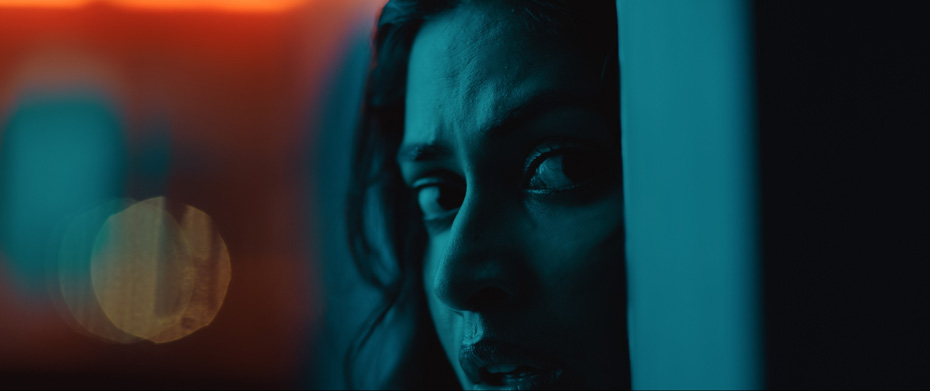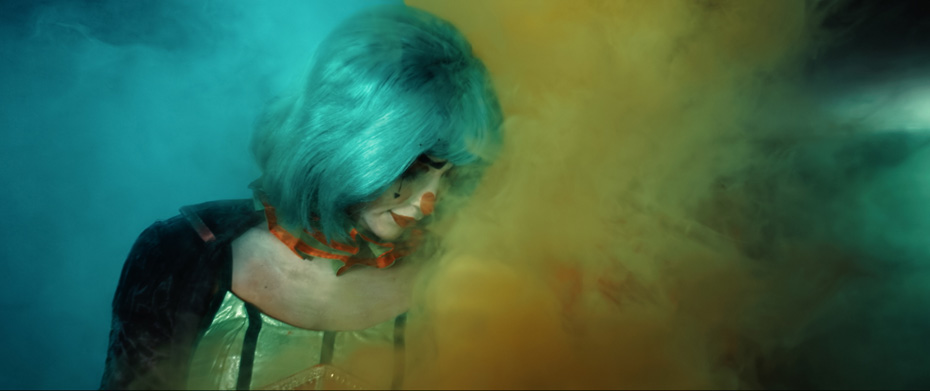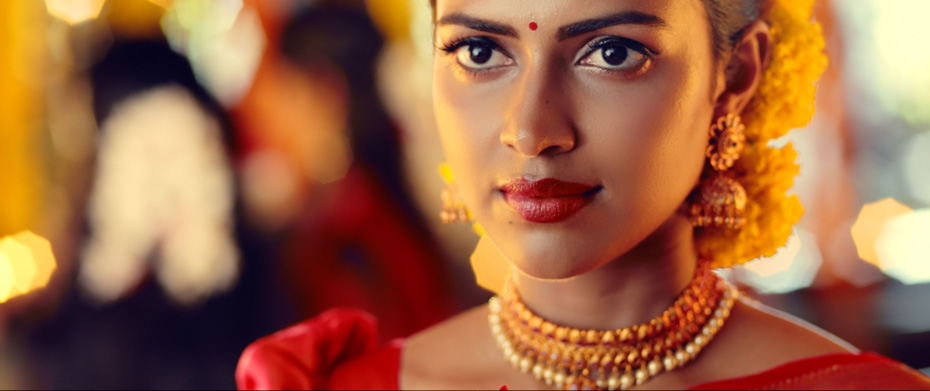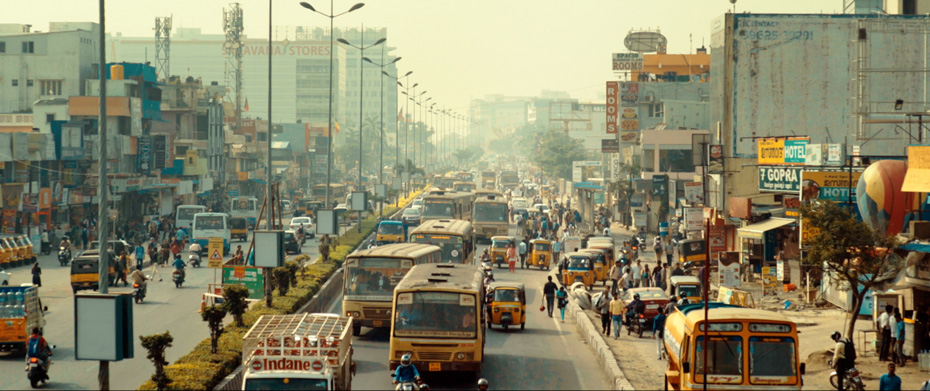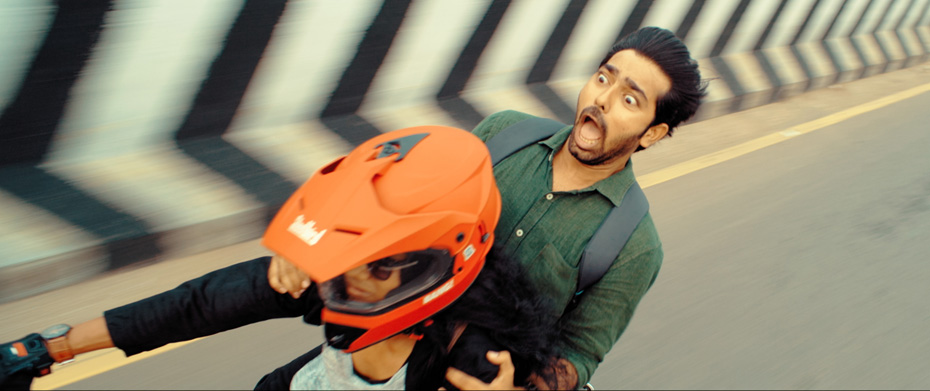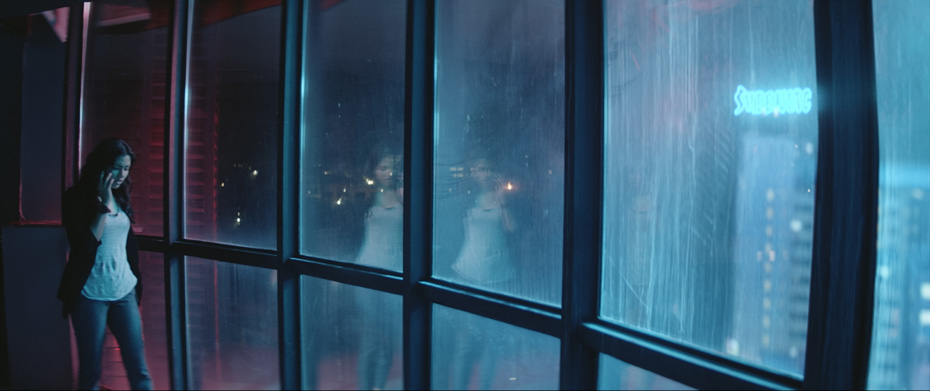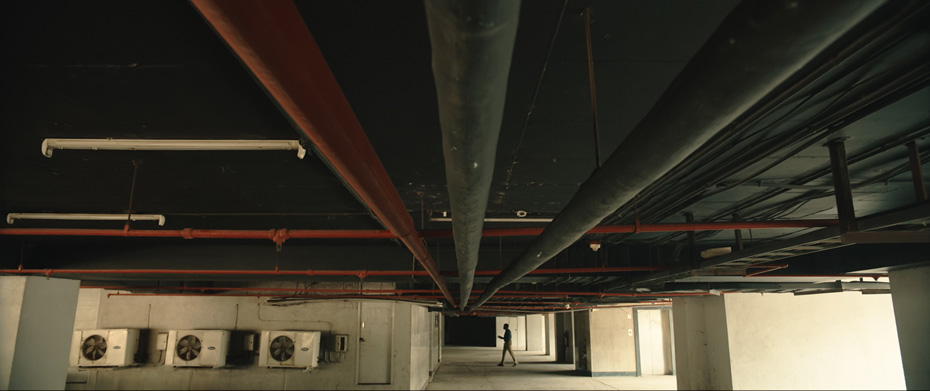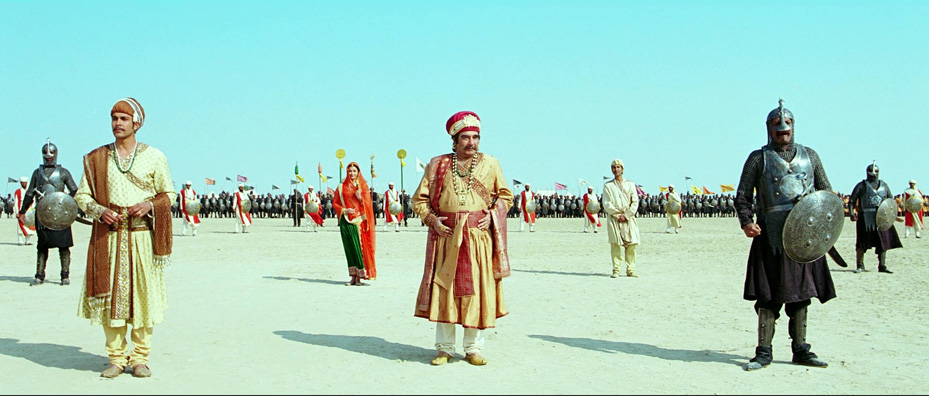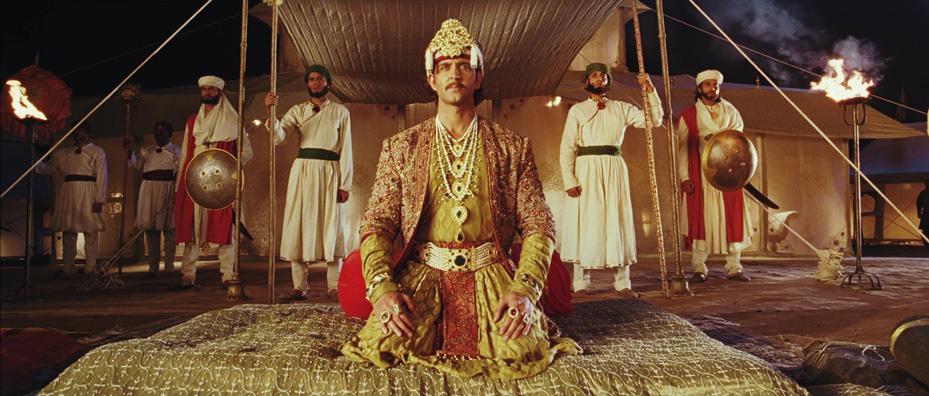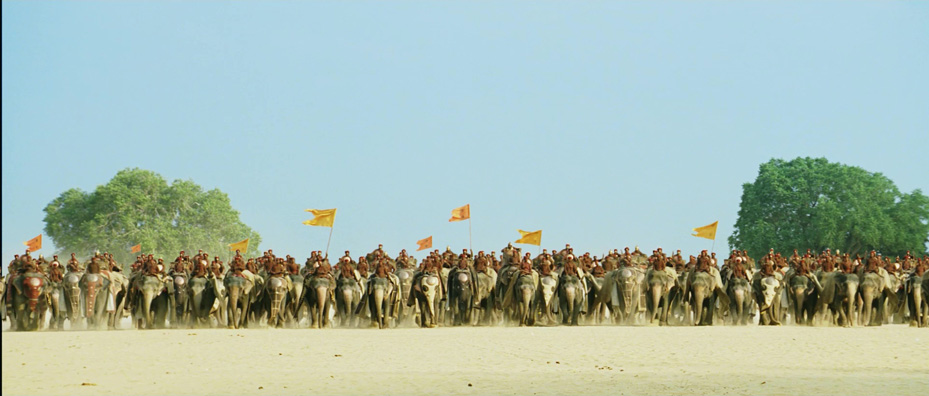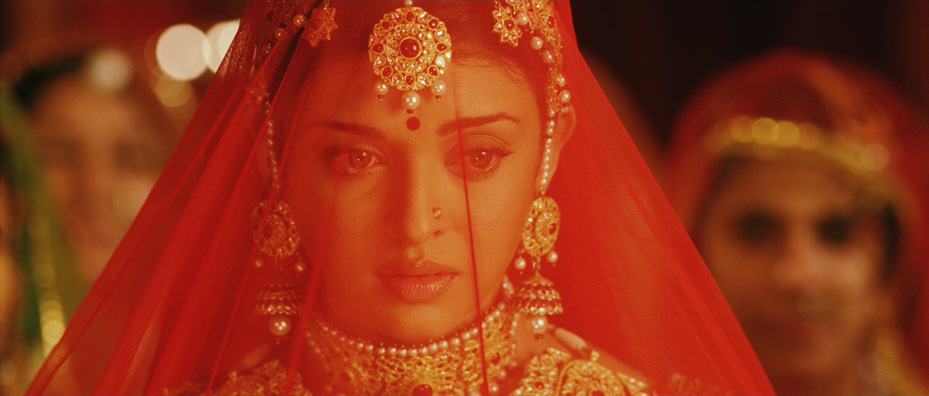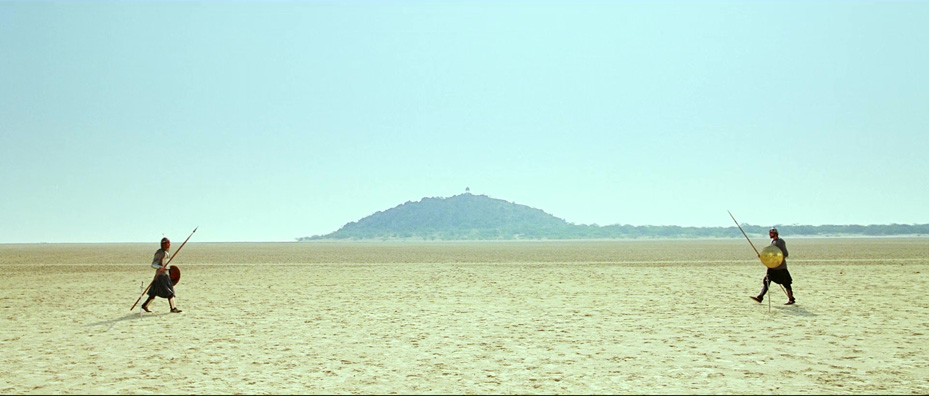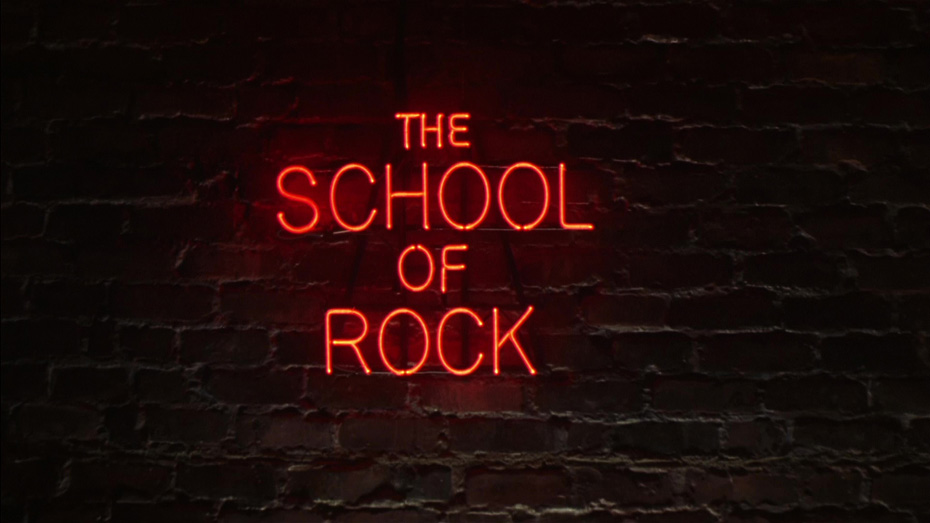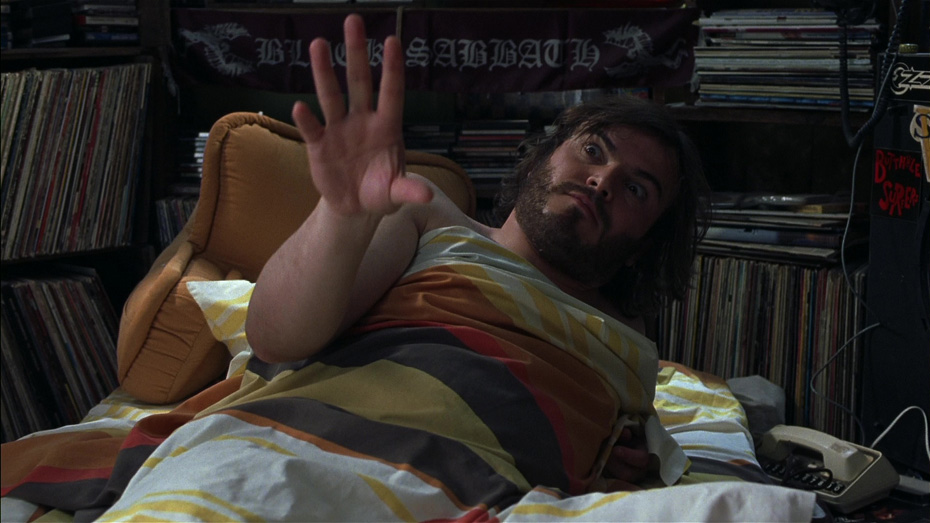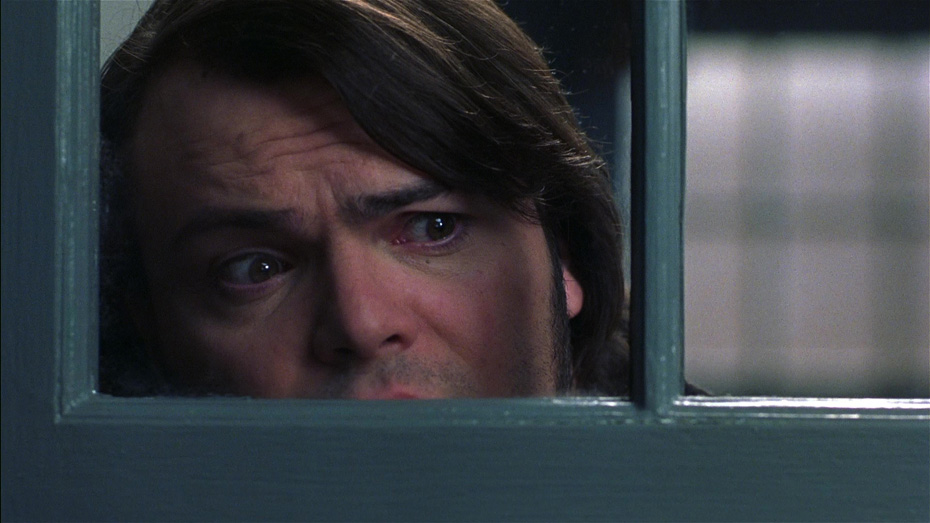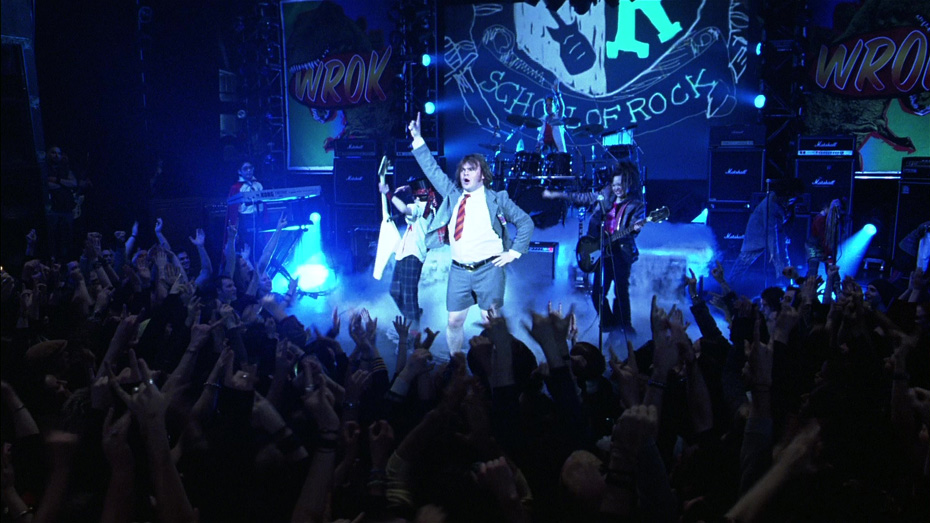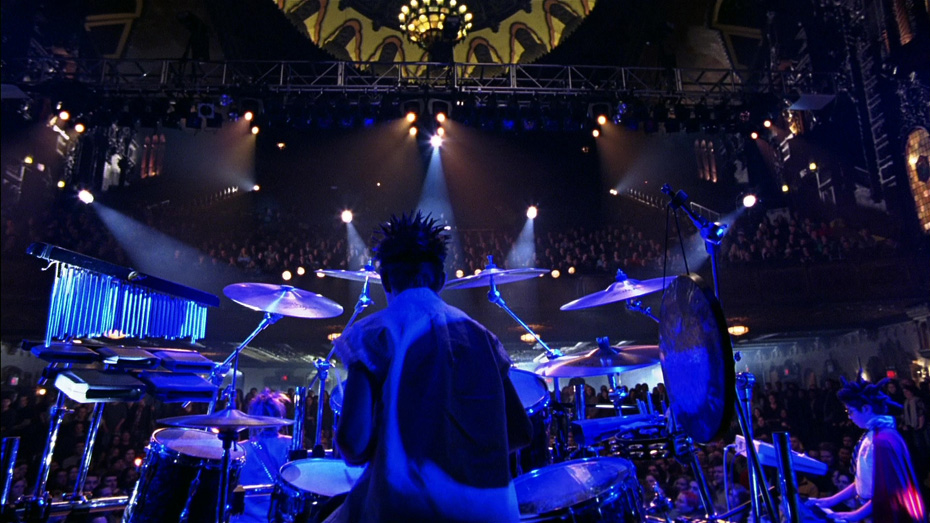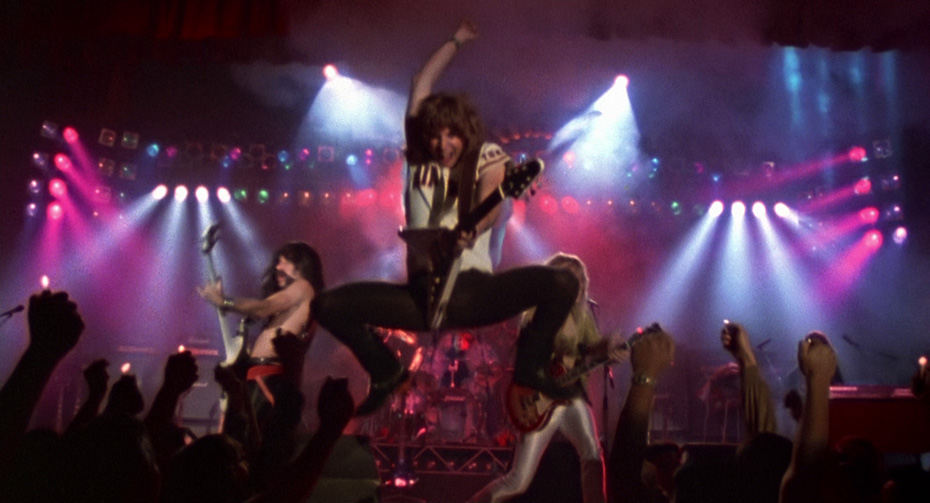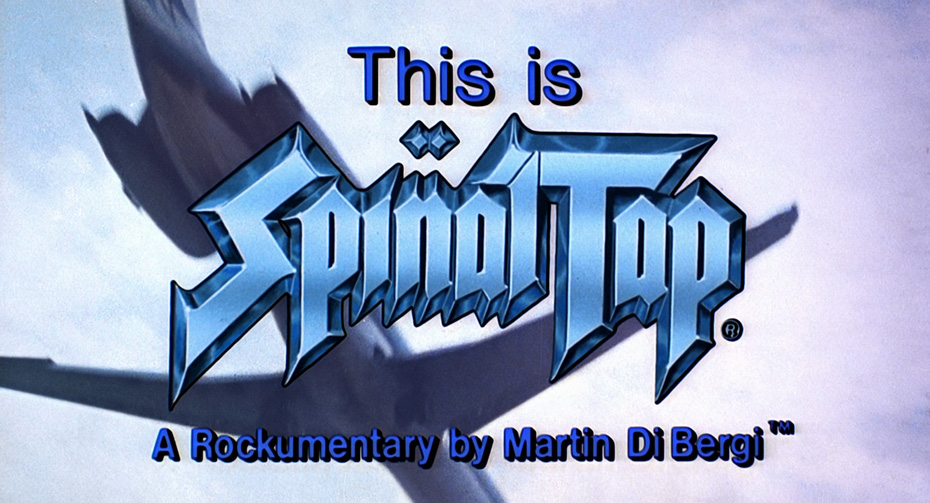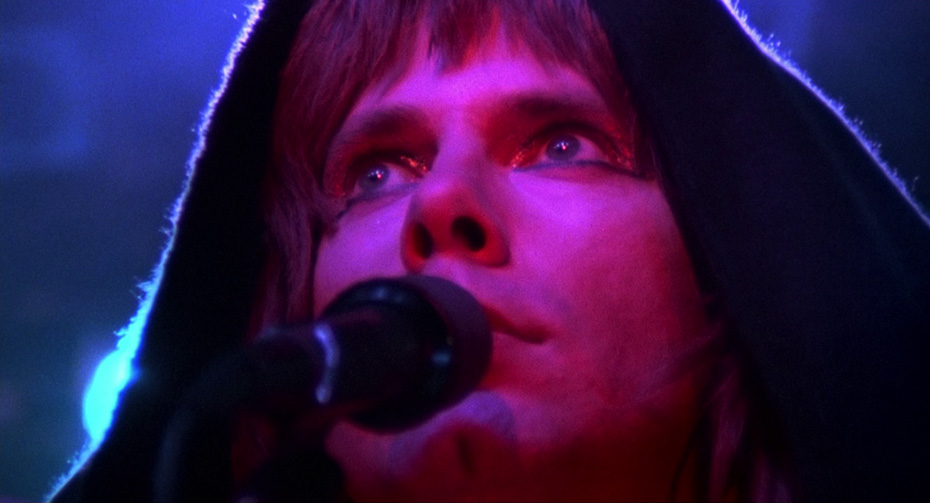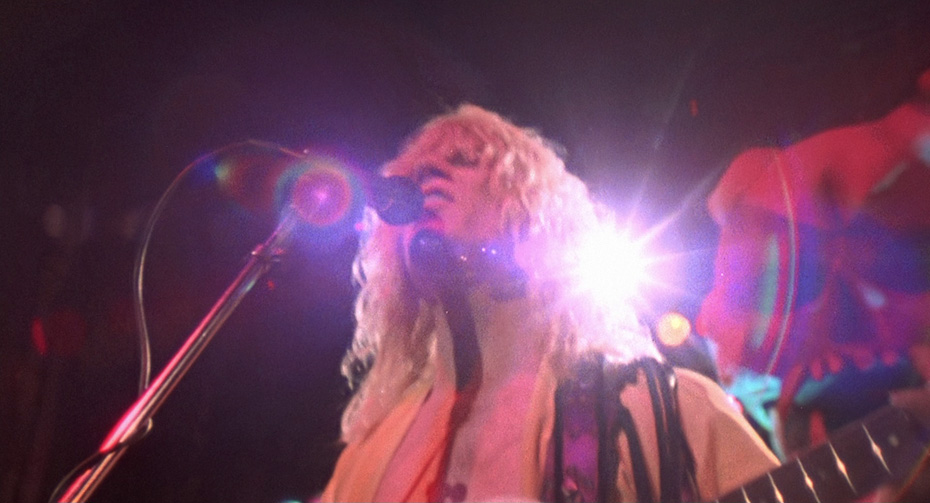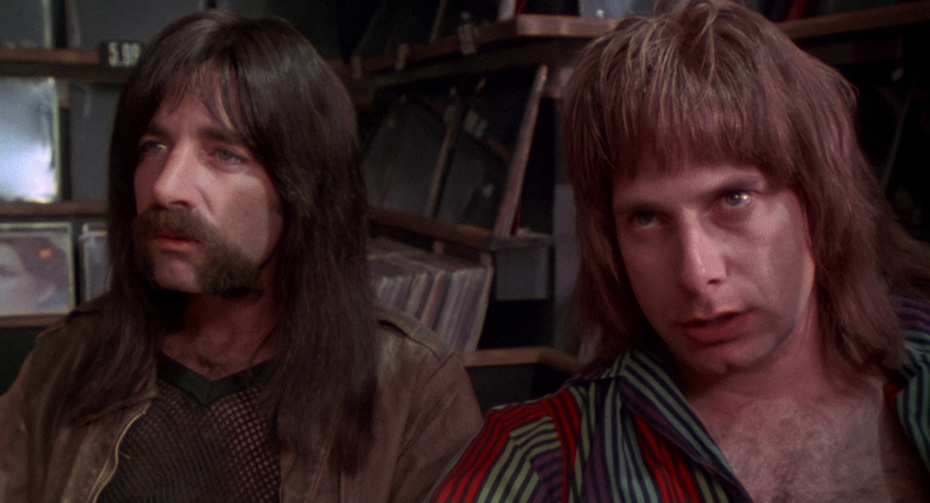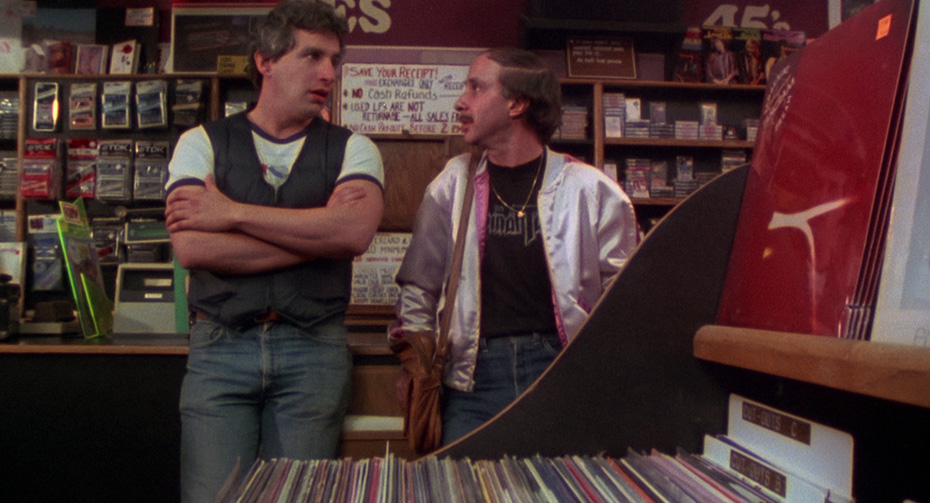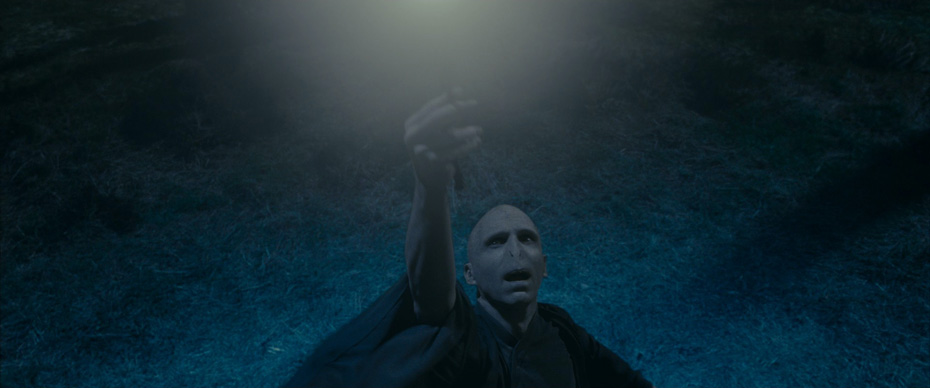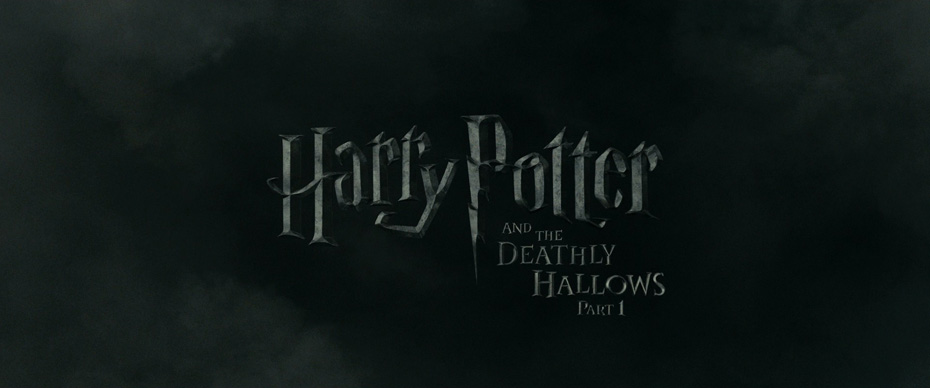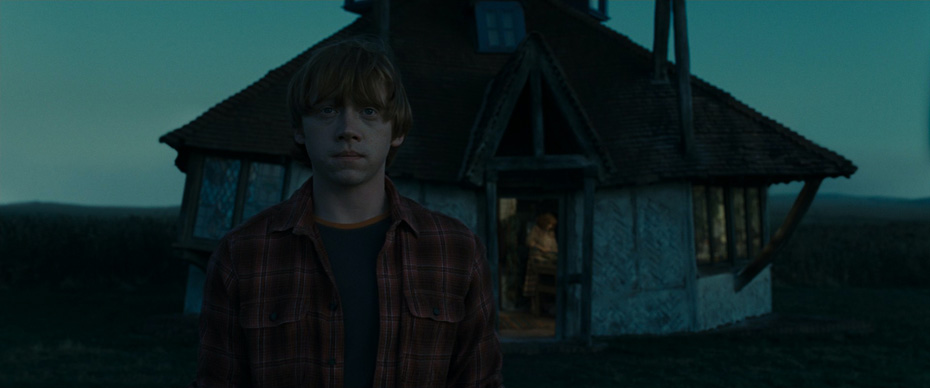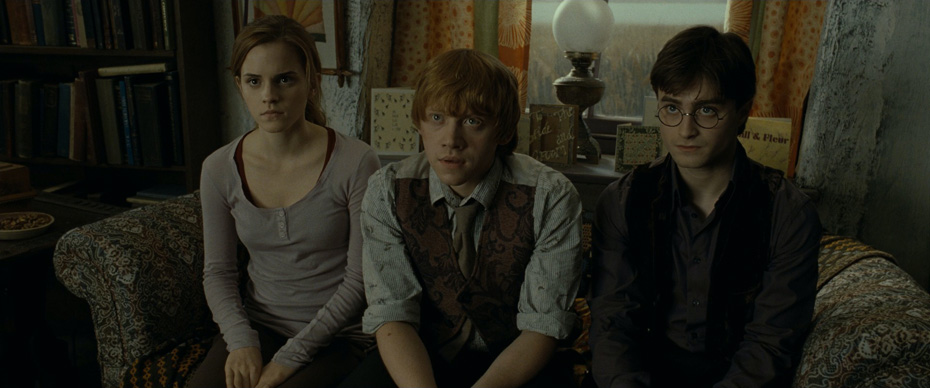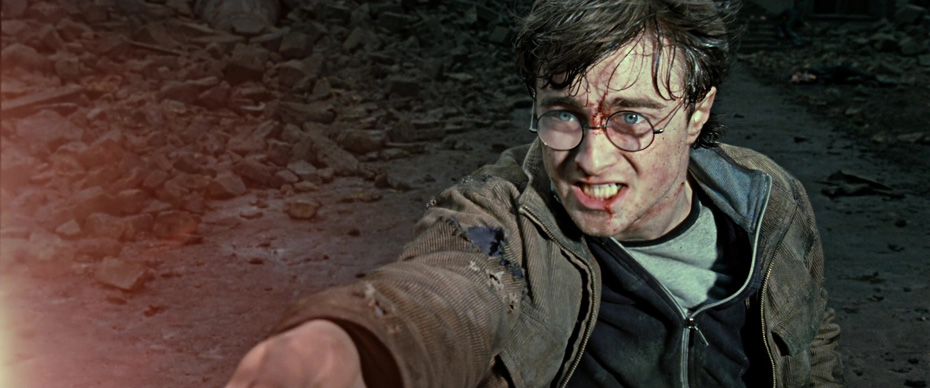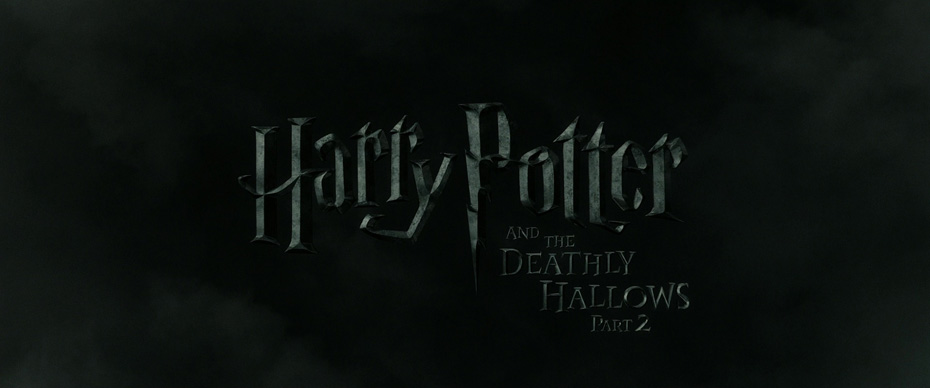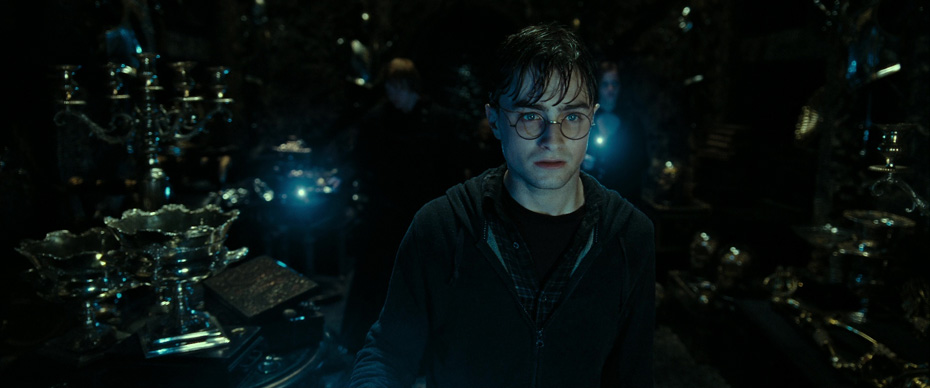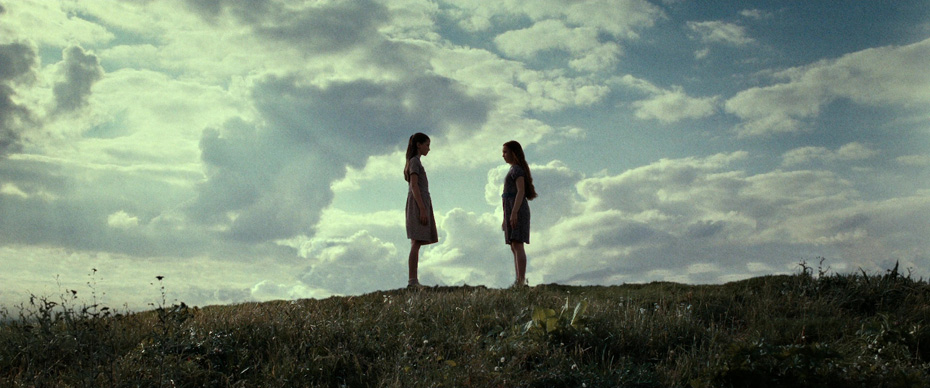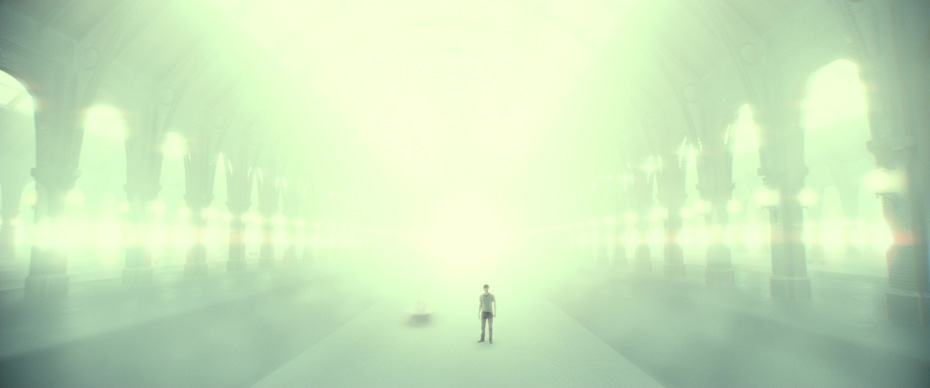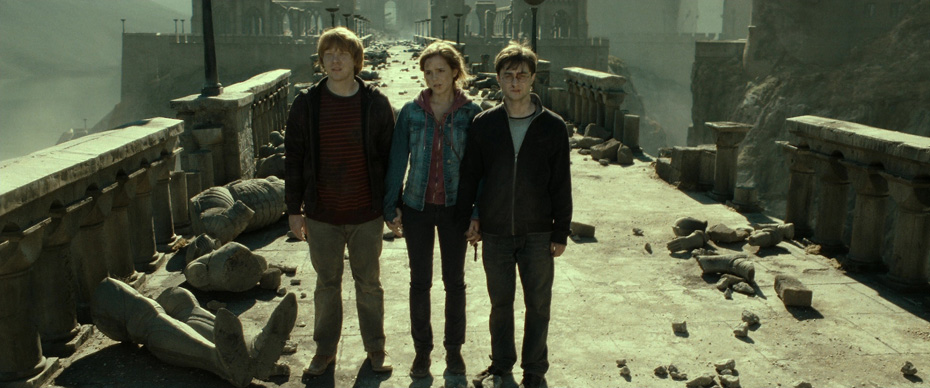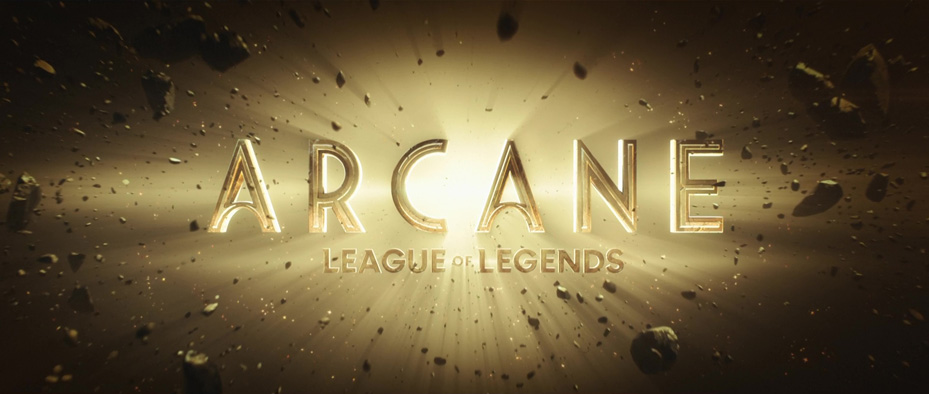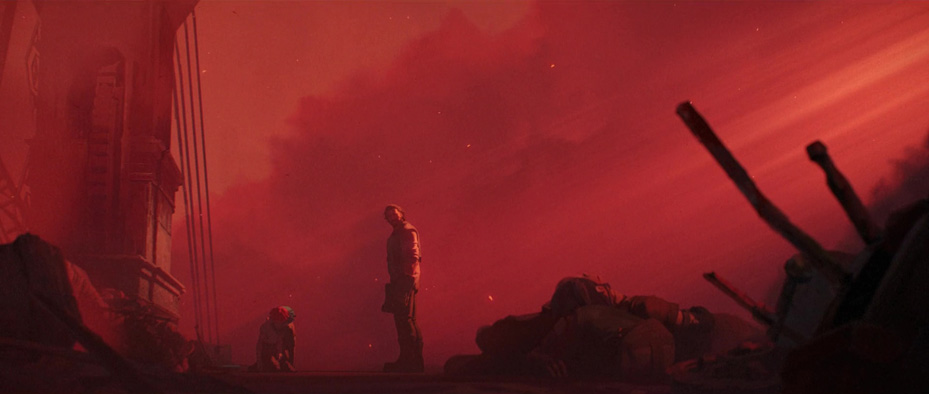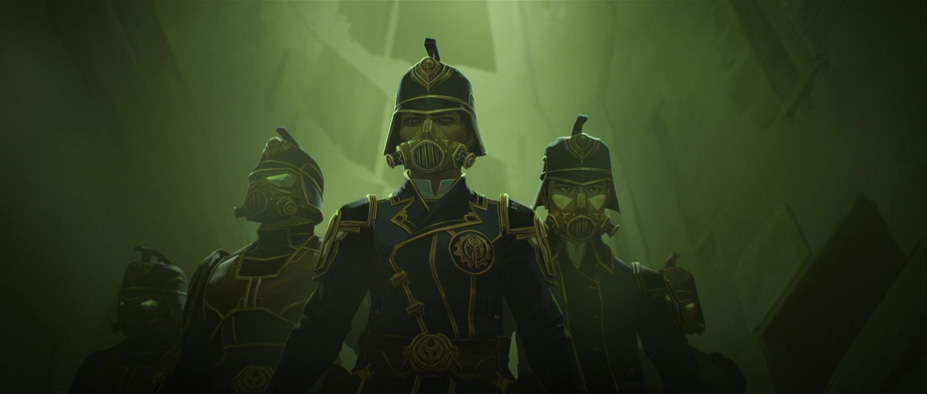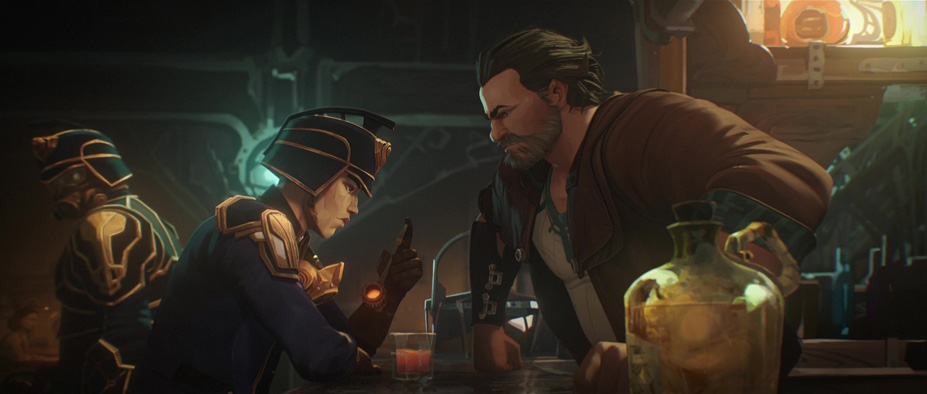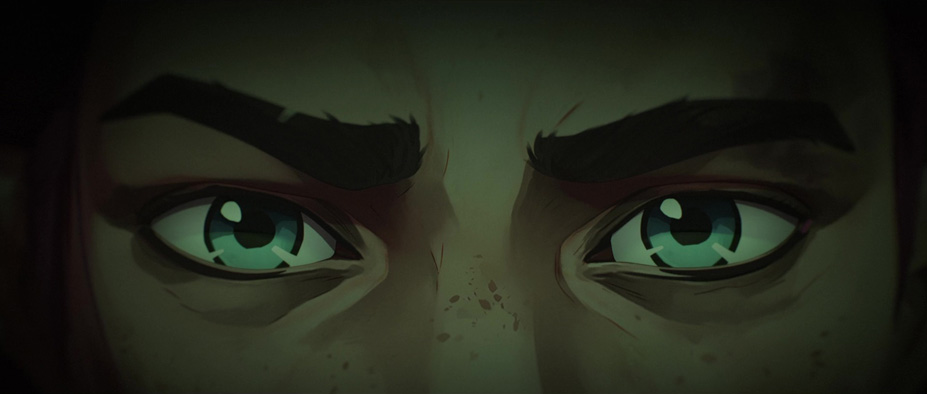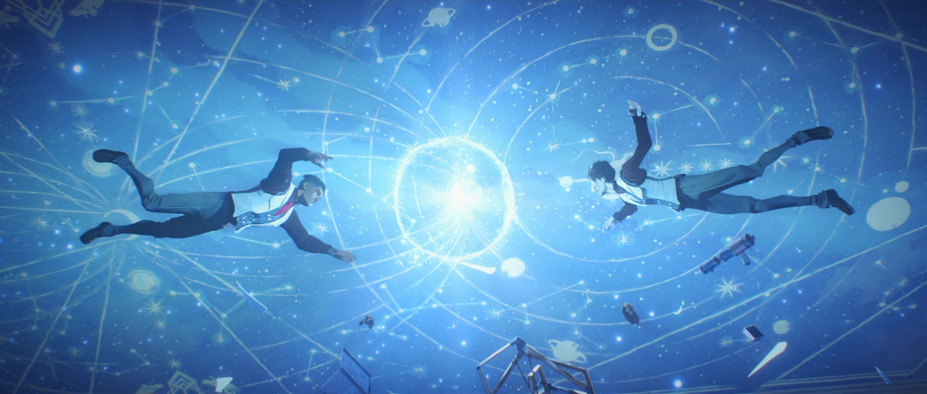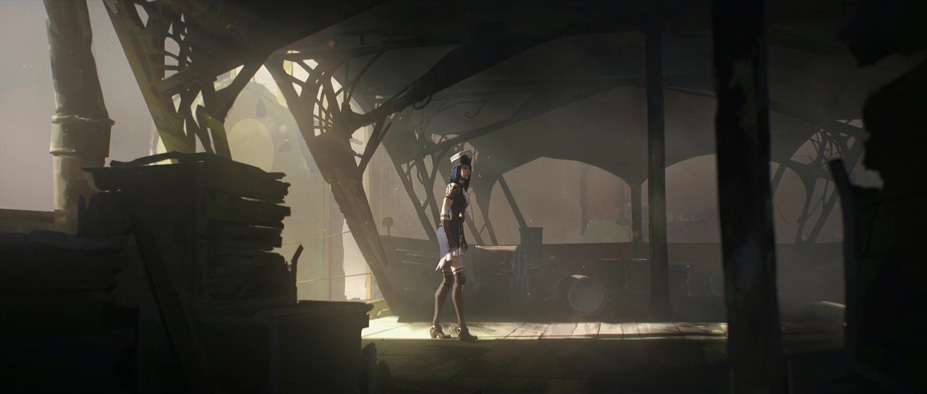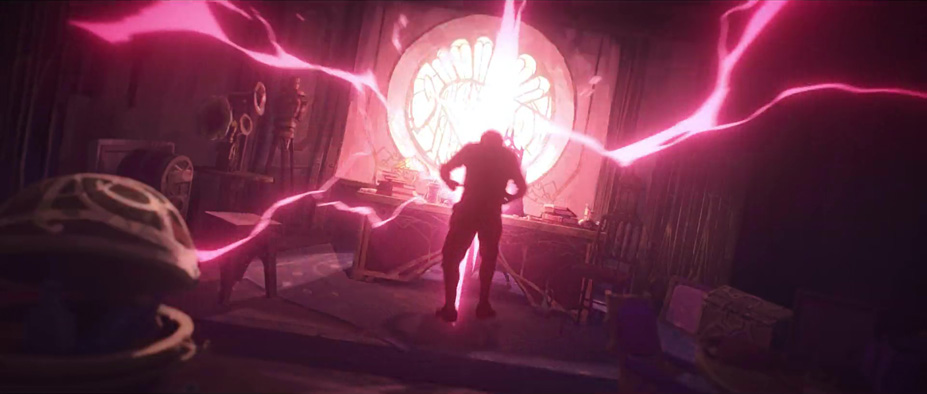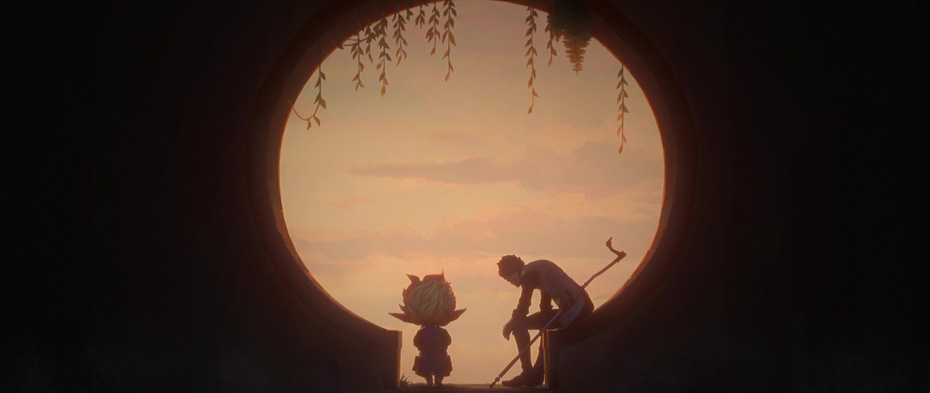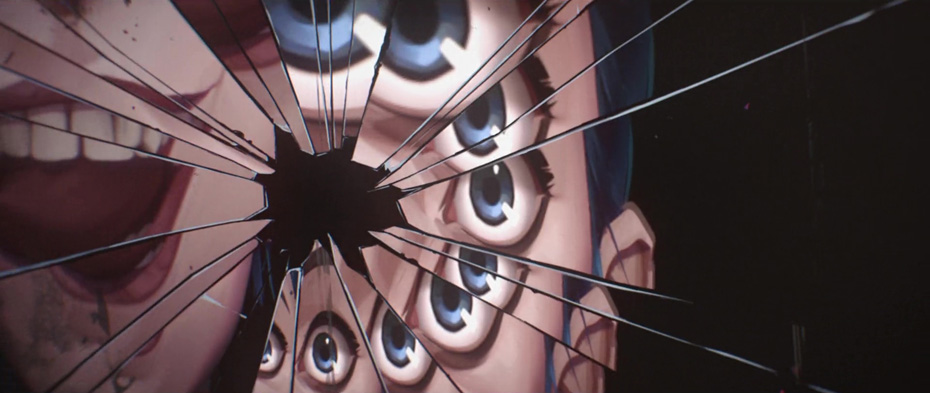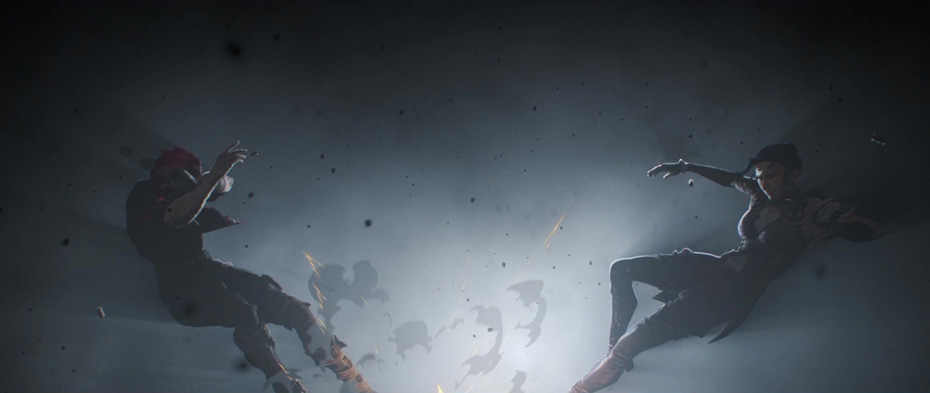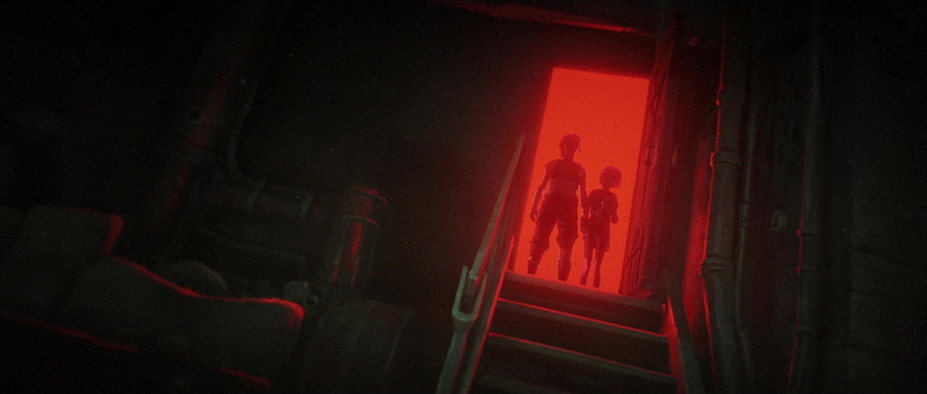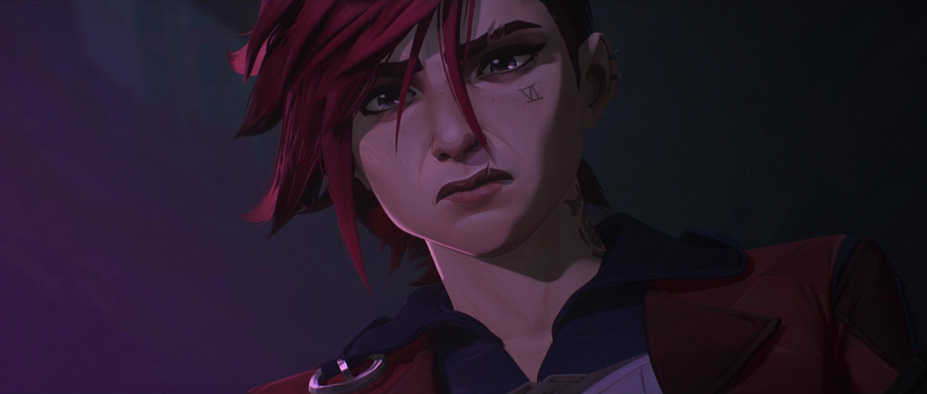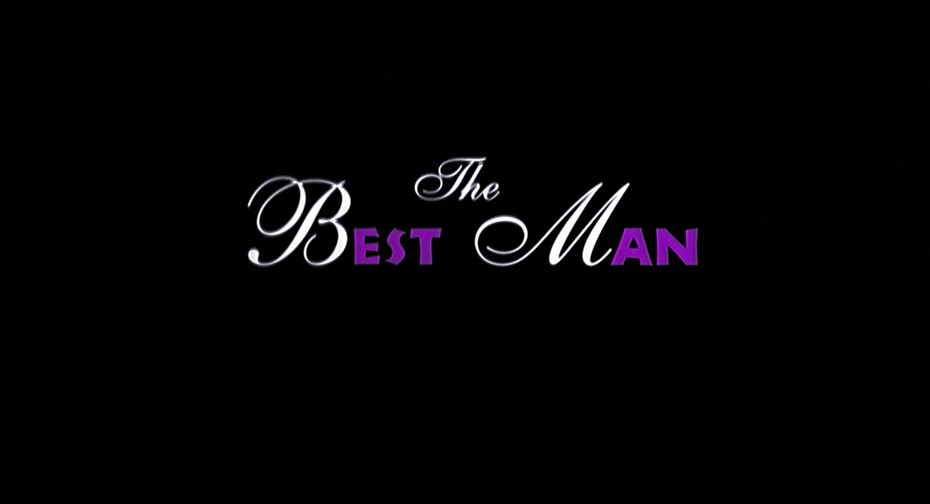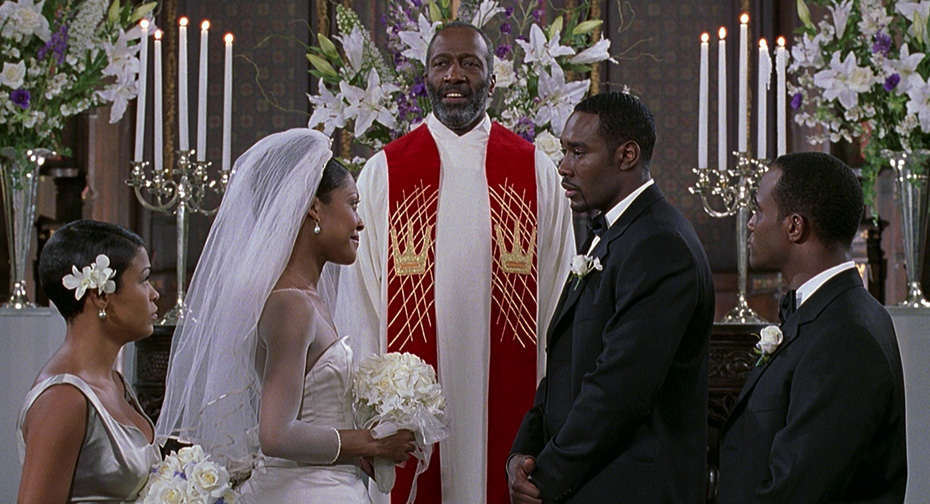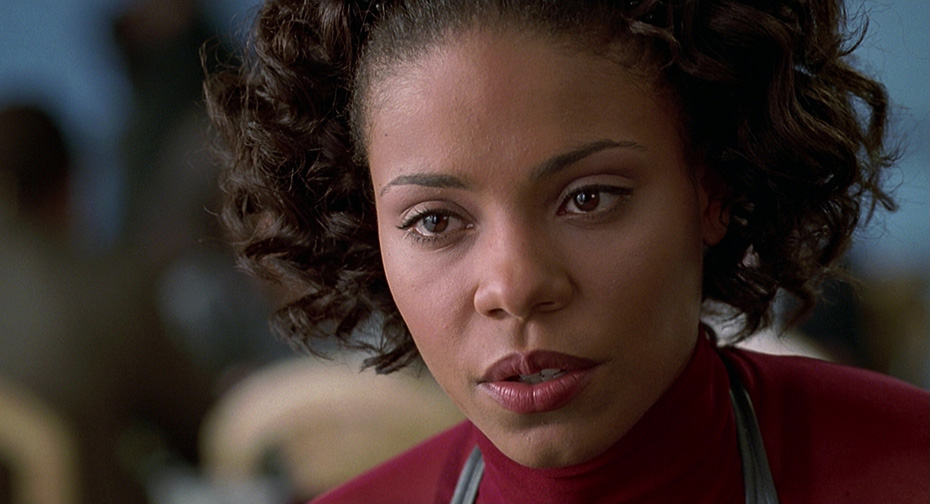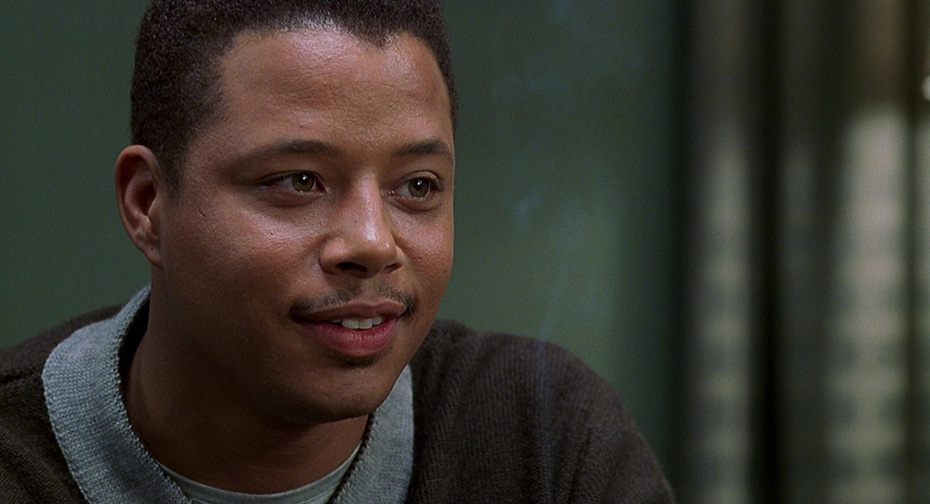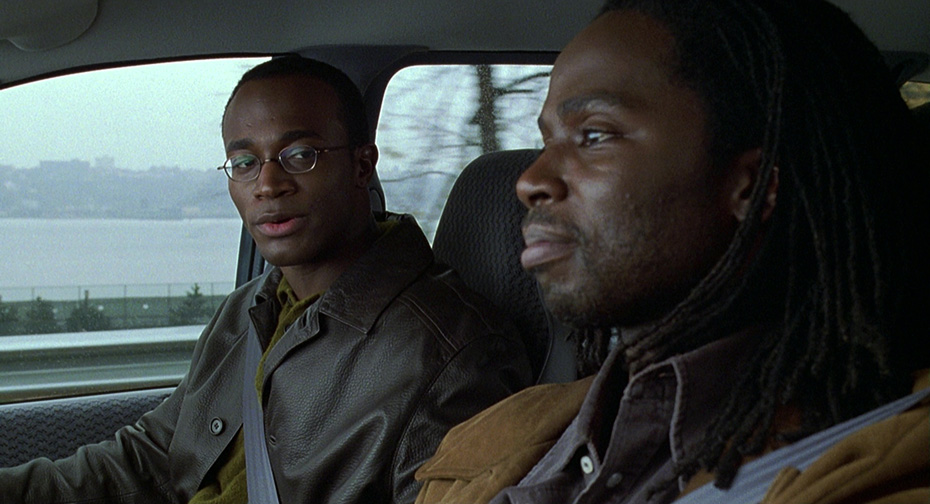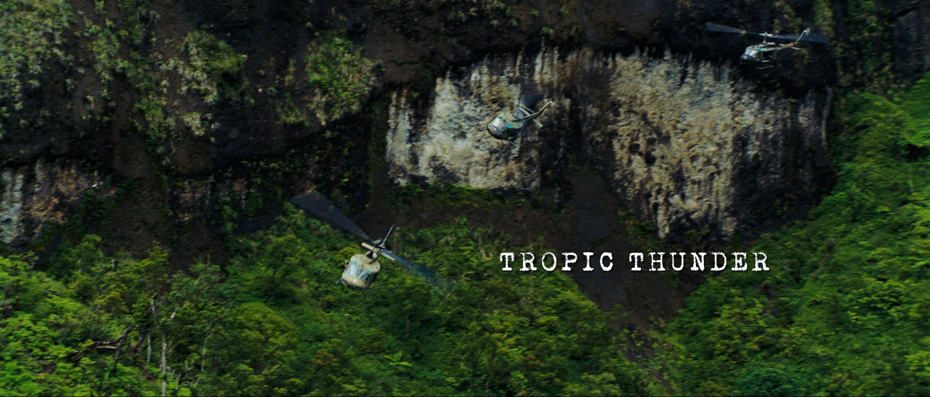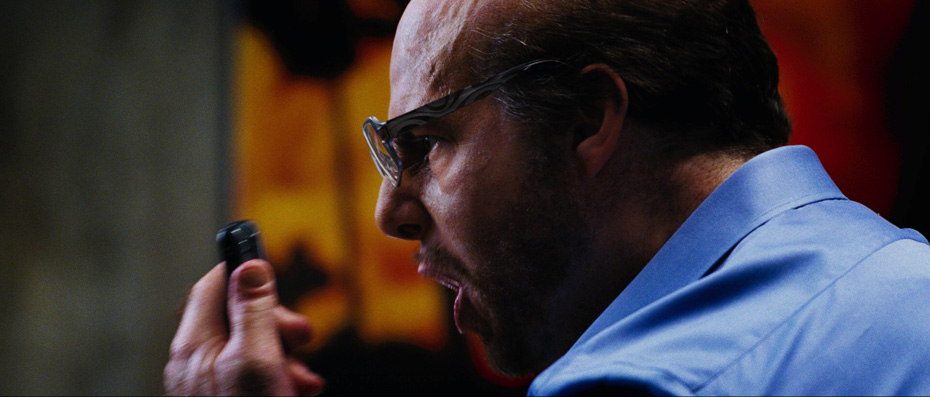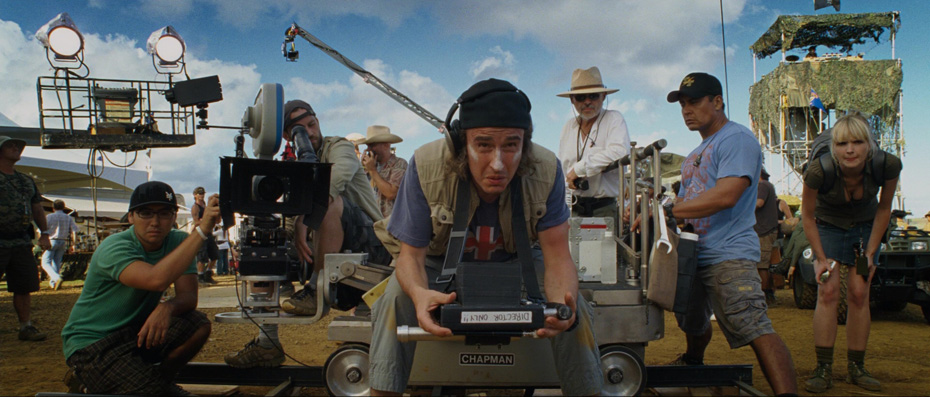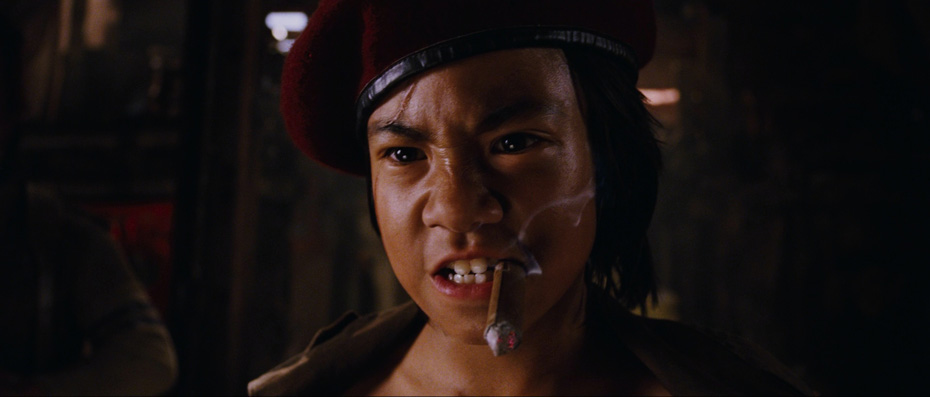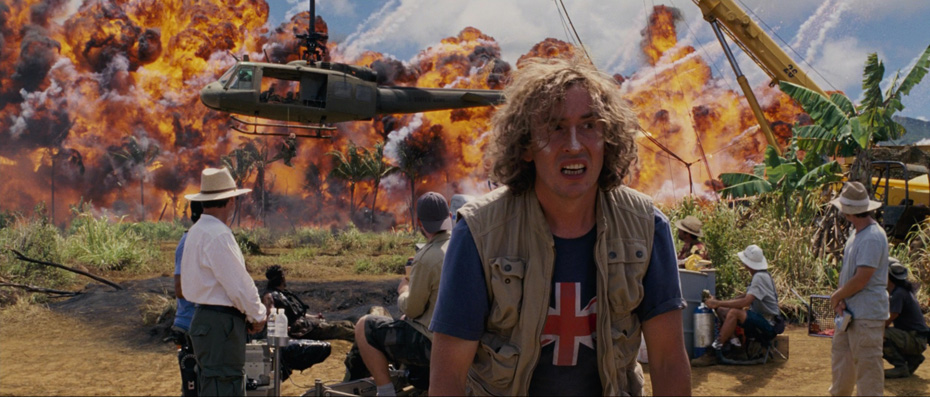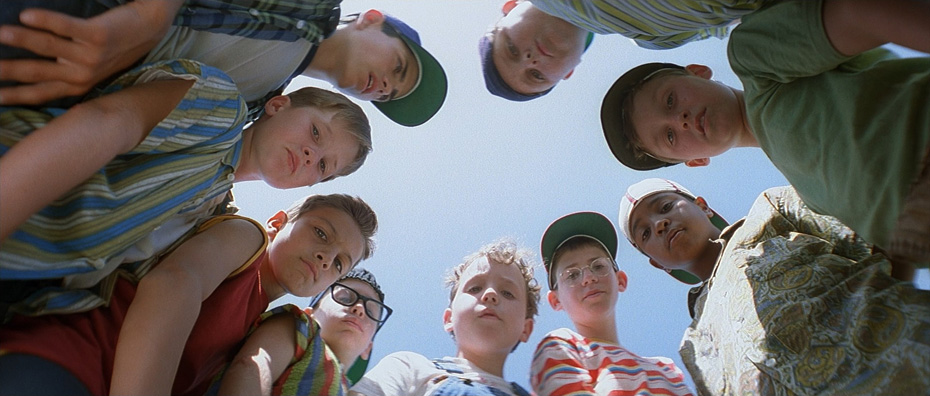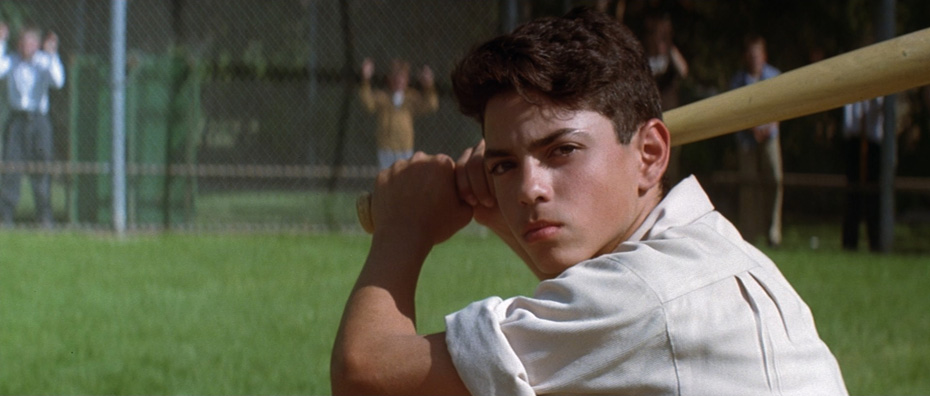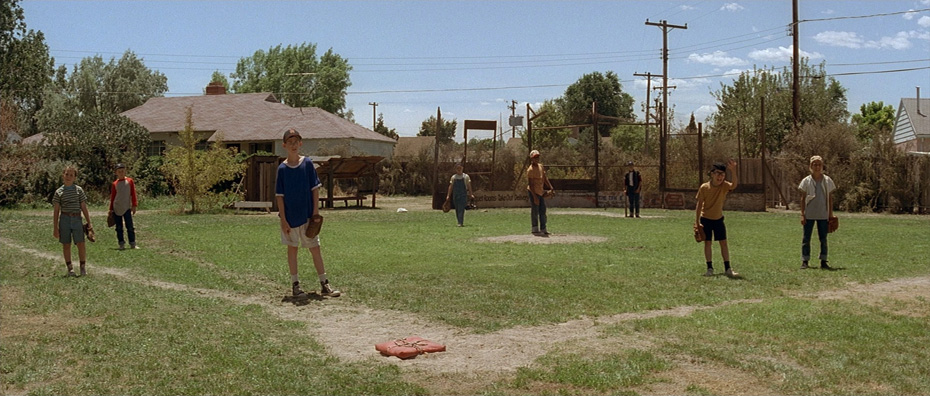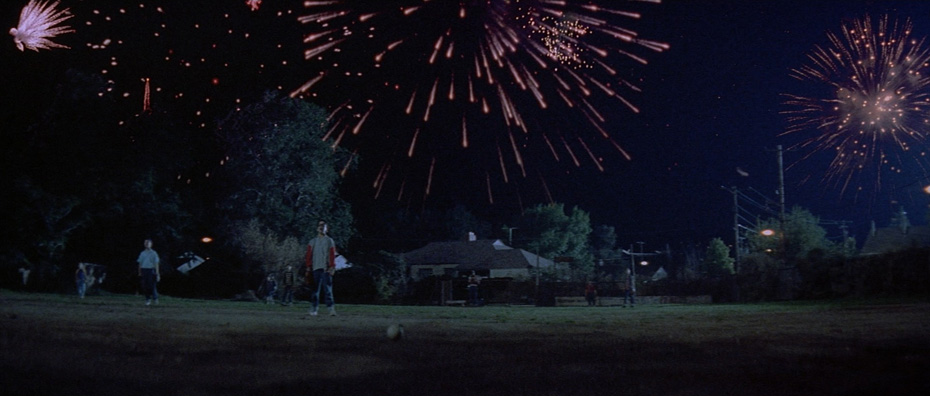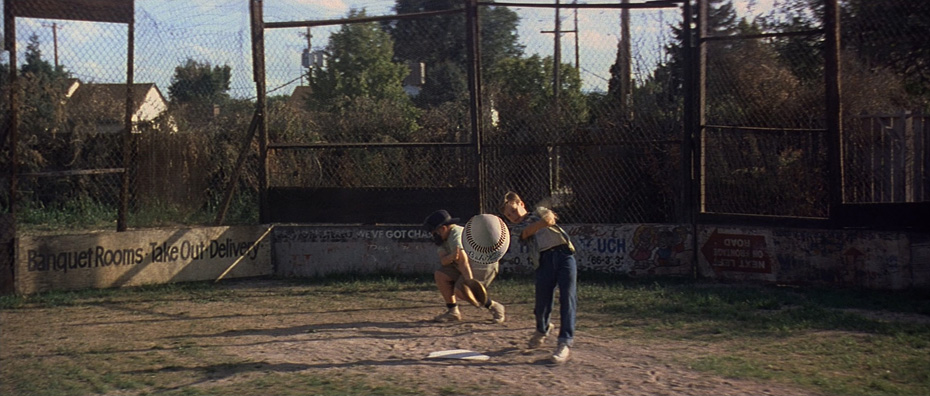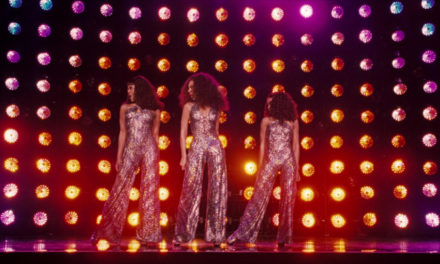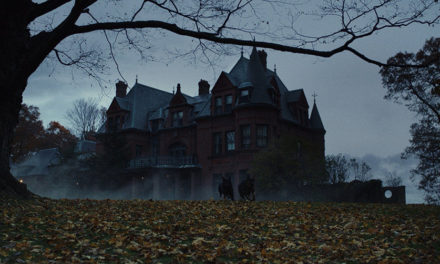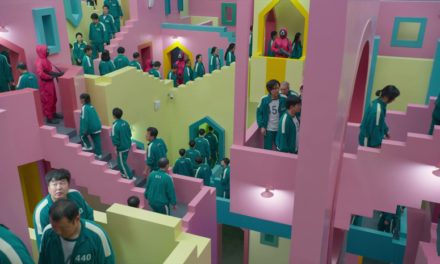THE TUESDAY DROP: 4600+ New Shots
09.06.22 Get your Decks ready ShotDeck Team! We’re adding 20 titles this week, including multiple Bollywood films like RRR, Saawariya, Aadai, and Jodhaa Akbar. Check them out below, and remember you can always request films for future drops by clicking here!
SAAWARIYA (2007)
Sanjay Leela Bhansali’s 2007 Indian Hindi-language romance film SAAWARIYA is based on Fyodor Dostoevsky’s 1848 short story White Nights, and stars Ranbir Kapoor as Raj, a free-spirited artist who arrives in an enchanted village and falls for the beautiful yet mysterious Sakina (Sonam Kapoor). Rani Mukherji, Salman Khan and Zohra Sehgal also star. Saawariya was the first Bollywood film to receive a North American release by a Hollywood studio, and was nominated for 6 Filmfare Awards, winning in the Best Male Debut and Best Male Playback Singer categories. Bhansali worked on the film with iconic Indian cinematographer Ravi K. Chandran. Chandran is a founding member of the Indian Society of Cinematographers, and is known for his work across Indian cinema on landmark films such as Kannathil Muthamittal, Dil Chahta Hai, Ekalavyan, Minsara Kanavu, Yuva and Fanaa.
Bhansali’s brief to Chandran when they began their collaboration on Saawariya was to create a surreal romantic interpretation of night time, and create a painterly world inspired by the work of Kashmiri and Rajasthani painters, as well as by Vincent Van Gogh. Bhansali worked with Chandra and Production Designer Omung Kumar to build the entire village that the film takes place in on set, using blue as the primary color for the visual language of the entire film. Chandran and Kumar were inspired by films such as Baz Luhrman’s Moulin Rouge and Aawara to design surrealist and lavish sets that were initially extended by CG, before Bhansali became more interested in the effects that CGI could have on the tone of the film. In the end, the entire first shot of the film was created by visual effects by means of 3D digital matte painting.
RRR (2022)
RRR is a 2022 Indian Telugu-language epic action drama co-written and directed by S. S. Rajamouli. The film is set in 1920, and follows a fictional story about two real-life Indian revolutionaries, Alluri Sitarama Raju (Ram Charan) and Komaram Bheem (N. T. Rama Rao Jr.), who begin to fight against the British Raj. Ajay Devgn, Alia Bhatt, Ray Stevenson, Alison Doody, and Olivia Morris also star. RRR was made on a budget of $72 million, making it the most expensive Indian movie ever made, and grossed over $160 million worldwide (including $30 million on its opening day, making it the highest opening-day collection ever for an Indian film). Rajamouli worked on the film with Indian cinematographer K.K. Senthil Kumar, who began collaborating with Rajamouli on his 2004 film Sye. The pair have since gone onto work on Chatrapathi, Yamadonga, Magadheera, Eega and the Baahubali films.
RRR represented a milestone film in Indian cinema for several reasons, especially for the technological leaps that Rajamouli and Senthil Kumar made in creating it. RRR was the first Indian film to be shot on large format Alexa cameras, and the first to use Dolby Cinema projection. These choices helped give RRR a sense of scale, and the combination of live-action, miniatures, special effects and CGI helped Rajamouli and Senthil Kumar create the epic action scenes that define the film. One of the most important sequences that Senthil Kumar shot was the first meeting of the two protagonists on the bridge. Rajamouli wanted this moment to feel like an epic moment, where fire and water were symbolically meeting. The sequence made extensive use of CGI, which the firm MPC helmed, projecting previews onto large TV monitors that were used on set. The underwater scene at the end of this sequence was shot in a 25 ft deep pool, and Senthil Kumar and his G&E team shone a strong warm source onto the water with a flicker to create the impression of fire sitting on the surface.
AADAI (2019)
AADAI is a 2019 Indian Tamil-language thriller written and directed by Rathna Kumar. The film stars Amala Paul as Kamini, an anchorwoman with a habit of pranking her friends and colleagues, who one day wakes up in an empty office building naked and without her phone. Kumar worked on Aadai with Indian cinematographer Vijay Kartik Kannan, who had previously worked on projects such as One Heart: The A.R. Rahman Concert Film and Sindhubaadh.
Given the controversial and potentially exploitative nature of the story being told, Kumar and Kannan entered their collaboration conscious of the need to remain respectful of the nude scenes, and film them in a way that helped Paul feel comfortable and did not show gratuitous nudity to the audience. The pair came up with four strategies by which they would shoot the nude portions of the film – covering using an object, playing with light and shadows, creative use of focus, and camera / actor motion. This also gave Kannan the opportunity to experiment with lenses such as probe lenses and periscope lenses, though he and Kumar were conscious to avoid using them in a way that felt gimmicky. The pair also worked closely with storyboard artists and body doubles to plan the film shot for shot, organizing frames to tell the story effectively, plan on how to shoot nude scenes, and ensure the film did not settle into a monotonous visual rhythm.
JODHAA AKBAR (2006)
Ashutosh Gowariker’s 2008 Indian Hindi-language epic historical drama JODHAA AKBAR stars Hrithik Roshan and Aishwarya Rai Bachchan as Mughal Emperor Akbar and Princess Jodhaa Bai, whose marriage of alliance eventually became a real romance between the pair. Sonu Sood, Kulbhushan Kharbanda, Suhasini Mulay and Raza Murad also star. Jodhaa Akbar won the Audience Award for Best Foreign Language Film at the São Paulo International Film Festival, and won two Indian National Film Awards. Gowariker worked on the film with Indian costume designer Neeta Lulla, who was known for her costume work on films such as Taal, Mission Kashmir and Devdas.
Gowariker and Lulla wanted the costumes of Jodhaa Akbar to be as faithful to the period as possible, while also serving to tell the story visually through the costumes of Roshan and Rai Bachchan, as well as the rest of the cast. Lulla began her work on the film a year and a half in advance, extensively researching clothing and fashion of the Mughal Empire, and traveling to Jaipur, India, to research the kinds of fabrics worn during the period. Lulla and Gowariker decided to highlight the contrast between Jodhaa and Akbar by separating the palette of their clothes – dressing Jodhaa (a Rajput) in yellows, oranges and reds, while giving Akbar, a Mughal, with more browns and beiges in his palette. Lulla relied on the Indian-Iranian Zardozi embroidery style for Akbar’s clothes, and the Indian-style Kundan jewelry for Jodhaa. A team of 200 craftsmen worked for over 600 days to create the jewels for Jodhaa, which weighed over 3.5 kilograms.
SCHOOL OF ROCK (2003)
Richard Linklater’s 2003 classic American comedy SCHOOL OF ROCK stars Jack Black as Dewey Finn, a struggling rock guitarist who is fired from his band and subsequently poses as a substitute teacher at a prestigious prep school. After seeing the musical abilities of his students, Dewey decides to form a rock band with the fourth-graders in an attempt to win the upcoming Battle of the Bands and use the winnings to pay off his rent debts. Joan Cusack, Mike White and Sarah Silverman also star. School of Rock grossed over $131 million from its $35 million budget, making it the highest-grossing musical-comedy of all time (prior to the release of Pitch Perfect 2 in 2015). Linklater worked on the film with American production designer Jeremy Conway. Beyond his work on projects such as Sex and the City and Failure to Launch, Conway is also known for his work designing the studio sets for NBC’s coverage of the Olympic Games.
Conway’s work on School of Rock entailed a very close collaboration with Location Manager Robert Striem, given the volume of real locations that the production team filmed at in and around the New York metropolitan area. Horace Green’s exteriors were shot at Wagner College in Staten Island, with the interiors largely shot at the Buckley County Day School in Roslyn, Long Island. After several months of filming on location, the production shot on sets in the Broadway stages in Queens for the interiors of classrooms, as well as the apartment that Dewey lives in with Ned and Patty. The final Battle of the Bands sequence was shot on Staten Island’s St. George Theater, which started as a vaudeville and opera house in 1928, before transitioning into becoming a movie theater as well.
THIS IS SPINAL TAP (1984)
Rob Reiner’s feature directorial debut is the 1984 masterpiece THIS IS SPINAL TAP, which he co-wrote with lead actor Christopher Guest. The film also stars Michael McKean and Harry Shearer (who also co-wrote the film) as members of the fictional British heavy metal band Spinal Tap. The film is a mockumentary that follows the band on what proves to be a fateful tour for the group. This Is Spinal Tap was selected for preservation in the US National Film Registry by the Library of Congress in 2002. Today, it is widely considered to be one of the greatest films ever made, and one of the most influential entries in the comedy and mockumentary genres. Reiner worked on the film with American cinematographer Peter Smokler. Smokler was a veteran documentary cameraman at the time, and has gone on to work on projects such as The Office, Parks and Recreation and It’s Always Sunny in Philadelphia.
After abandoning the idea of writing a script to sell financiers on the film, Reiner and Guest worked with McKean and Shearer to film a short demo of the film using $60,000 they had raised to write a screenplay. When TV writer-producer Norman Lear decided to back the project, Reiner and Guest decided to hire Smokler due to his experience with vérité documentary filmmaking. Reiner and Guest decided to shoot the entire film over a five week period in Los Angeles without a script, influenced by films such as Don’t Look Back and The Last Waltz. With no script and no shotlist to work from, Smokler was left to completely improvise the camerawork and placement with some guidance from Reiner about the important elements to capture. In the end, the film was shot as a documentary, with over 100 hours of footage captured, requiring 3 editors to sift through the footage to edit the movie down into the length it is today.
HARRY POTTER AND THE DEATHLY HALLOWS: PART 1 is a 2010 fantasy film based on J.K. Rowling’s 2007 novel of the same name, and is the 7th installment in the Harry Potter film franchise. The film was directed by David Yates, and follows Harry (Daniel Radcliffe), Ron (Rupert Grint) and Hermione (Emma Watson) as they set out on their task to find and destroy the Horcruxes of Lord Voldemort (Ralph Fiennes). Harry Potter and the Deathly Hallows: Part 1 was nominated for Best Art Direction and Best Visual Effects at the Academy Awards. Yates worked on the film with Portuguese cinematographer Eduardo Serra, who was best known at the time for his collaborations with Patrice Leconte and Claude Chabrol, and on the films The Wings of the Dove and Girl with a Pearl Earring.
Harry Potter and the Deathly Hallows: Part 1 differed from the other films in the franchise because, for the first time, the story was not predominantly set at Hogwarts. Yates wanted the film to therefore feel more like a road movie, and to be shot in a more intimate way, reminiscent of a verité documentary following the three principal characters. Serra shot many of the film’s sequences with a hand-held camera, following the action rather than carefully composing each frame as a static shot. In order to capture the film’s more somber tone, Serra also pushed the look of the film visually, pushing the 35mm film stock that the film was shot on, utilizing flame sources and embracing darkness as both a compositional element as well as a lighting device.
HARRY POTTER AND THE DEATHLY HALLOWS: PART 2 is the final installment in the Harry Potter film franchise, and the second cinematic part to J.K. Rowling’s seventh and final book in the series. The film was directed by David Yates and follows Harry Potter (Daniel Radcliffe) in the final leg of his quest to destroy Lord Voldemort’s (Ralph Fiennes) Horcruxes and kill him in a final epic battle at Hogwarts. The film also stars Rupert Grint, Emma Watson, Helena Bonham Carter, Maggie Smith, and Alan Rickman. Harry Potter and the Deathly Hallows: Part 2 was nominated for Best Art Direction, Best Makeup and Best Visual Effects at the Academy Awards. Yates worked on the film with British production designer Stuart Craig, who had worked on all the previous Harry Potter films, as well as The Elephant Man, Gandhi and The English Patient.
Given his history with the Harry Potter film franchise, Craig had a huge deal of history and material to bring to his collaboration with Yates for the franchise’s final installment. Unlike Part 1, which was mostly filmed on location, Harry Potter and the Deathly Hallows: Part 2 took place mostly at Hogwarts, and Yates wanted the film to have an epic, operatic feel, in spite of the relatively limited locations in which the action took place. Craig had been constantly re-designing the scale and scope of Hogwarts across the franchise, mixing and matching architecture from the 12th to the 16th centuries, drawing heavily from Gothic and early Victorian elements. His biggest challenges were to design new sets that could logically fit within the imagined architecture of Hogwarts, while providing a grand enough sense of scale to the action taking place. The biggest task for his team was to create the Great Hall after it was destroyed by the battle that took place in it – requiring him and his team to completely rebuild the set on stage, with the richness in detail to convincingly show it as decimated by the battle.
ARCANE: SEASON 1 (2021)
ARCANE (or Arcane: League of Legends) is an animated action-adventure television series created by Christian Linke and Alex Yee. The show is produced by Fortiche under the supervision of Riot Games, and is distributed by Netflix. The series is set in Riot’s League of Legends fictional universe and follows Vi (Hailee Steinfeld) and Jinx (Ella Purnell), sisters fighting on rival sides of a war between magic technologies and clashing convictions in the twin cities of Piltover and Zaun. Season 1 of Arcane premiered on Netflix in 2021, with a second season set for a post-2022 release. Linke and Yee released a five part documentary series called Arcane: Bridging the Rift in August 2022, detailing how the series was made from conception to final product.
Linke and Yee wanted to work with Fortiche from the outset of creating Arcane, who they had previously partnered with on several projects, including the music video Get Jinxed when they were trying to bring cinematic visuals and storytelling to League of Legends. Linke and Yee believed that the animation Fortiche was producing would give the show an emotional depth as well as a visual quality that elevated it beyond other anime shows they had seen. The collaboration began because the League of Legends team was excited by the imperfections of Fortiche’s animated camerawork, which helped put the audience in a space where they could believe someone was in the scene operating the camera. To convince the Riot Games team that the show could exist, Linke and Yee asked for a $2,000 budget to draw concept art for the show, gradually expanding it to show the possibilities of a long-form narrative adaptation of the video game. Linke and Yee started building out storylines, while they would ask Fortiche to simultaneously develop “spikes”, short clips where they explored moments from scenes to see if they could animate the characters in a way where the performances and movements felt believable. In 2015, Linke and Yee developed a larger animation test of a fight scene with Fortiche that displayed the cinematic storytelling potential of the League of Legends story. By the time that Riot Games saw this test, Linke and Yee had developed all the materials needed to dive into producing the series itself.
THE BEST MAN (1999)
Malcolm D. Lee’s debut feature directorial effort, THE BEST MAN, is a 1999 American romantic comedy-drama starring an ensemble cast led by Taye Diggs, Nia Long and Regina Hall (in her feature film debut). The film takes place just before a wedding, at which the life of a Chicago writer turns upside-down when his best friend guesses that his new book is based on his bride-to-be’s past. The Best Man premiered at the Urbanworld Film Festival in New York, and went on to gross over $35 million from its $9 million budget. Lee worked on the film with Bulgarian-American production designer Kalina Ivanov, who is known for her work on projects such as Little Miss Sunshine, Grey Gardens and Lovecraft County.
Ivanov’s work on The Best Man involved extensive use of locations, given the film’s production in New York City. The production crew predominantly filmed in and around Manhattan, with Ivanov dressing and converting locations to match the story of each scene in the film. The crew filmed the airport scenes as La Guardia airport in Queens, some of the film’s early scenes near Franklin Bowles Galleries in Manhattan as well as Central Park, as well as a book shop between Prince and Spring Streets in Soho (once home to a laundromat). Additional scenes were filmed at The Church of the Ascension on Fifth Avenue in Manhattan, nearby to where Lee and his producer and cousin Spike Lee both attended film school at NYU.
TROPIC THUNDER (2008)
TROPIC THUNDER is a 2008 American action comedy co-written, starring and directed by Ben Stiller. Stiller stars alongside Jack Black, Robert Downey Jr., Jay Baruchel and Brandon T. Jackson as a group of actors making a Vietnam War film who are thrust into a world of real danger when their director (Steve Coogan) decides to drop them into the middle of the jungle in a frustrated bid to draw authentic performances from them. Tom Cruise, Nick Nolte, Danny McBride, Matthew McConaughey and Bill Hader also star. Tropic Thunder grossed over $195 million from its $92 million budget, earning a Best Supporting Actor nomination for Downey. Stiller worked on the film with American cinematographer John Toll, in the pair’s first collaboration. Toll was known at the time for his work on films such as Legends of the Fall, Braveheart, The Thin Red Line and Almost Famous.
Tropic Thunder was predominantly shot on location in Hawai’i over 10 weeks, chosen for its similarity to Vietnam’s vegetation and the tax incentives in place for the production. Stiller wanted the film to have a naturalistic look and feel, given the broadness and absurdity of its humor. Toll opted to shoot the film in widescreen Super 35 format with a 2.40:1 aspect ratio, the first time he had shot a widescreen film without anamorphic lenses. Toll worked with two camera units (the second unit DP was Josh Bleibtreau and the aerial DP was David Nowell), shooting with the Panaflex Millennium XL and Primo prime lenses, as well as one 135-420mm zoom lens (An ARRI 435 camera was also carried by the first unit). The crew’s biggest challenge was navigating the intense jungle of Kauai and maintaining their shooting speed as well as the film’s visual continuity, and Toll worked closely with the DI to ensure that colors would match across the film. With most of the film shot in daylight exterior locations, Toll relied on Kodak Vision 2 200T 5217 stock, using the 500T 5218 stock in low light exterior scenes. The other big challenge for Toll and the crew were the explosion scenes, such as the napalm explosions in the film’s opening sequence, that required tight management of camera and story to ensure that these explosions were filmed as few times as possible.
THE SANDLOT (1993)
THE SANDLOT is a 1993 American coming-of-age sports comedy co-written and directed by David M. Evans. The film is set in the San Fernando Valley in Los Angeles, and follows a group of young baseball players during the summer of 1962 who get into trouble when new kid Scottie Smalls’s (Thomas Guiry) ball gets hit over a fence. The film stars Mike Vitar, Karen Allen, Denis Leary and James Earl Jones. The Sandlot grossed over $34 million from its $7 million budget and has gone on to become a cult hit. Evans worked on the film with American production designer Chester Kaczenski.
With the vast majority of The Sandlot shot on location, Kaczenski’s work on the film largely resided in dressing locations to be appropriate for sets, and to help production through use of props and tricks that were hidden to the audience. The famous scene where Smalls comes face to face with “The Beast” was achieved by spreading baby food on the side of Guiry’s face hidden from camera in order to keep the dog still and focussed during the take. For the scene where the kids ate chewing tobacco, Kaczenski made a prop chewing tobacco out of licorice and bacon – the combination of which was so bad to the actors that it did actually make them feel unwell (though the vomit was created from split pea soup, baked beans, oatmeal, water and gelatin).


